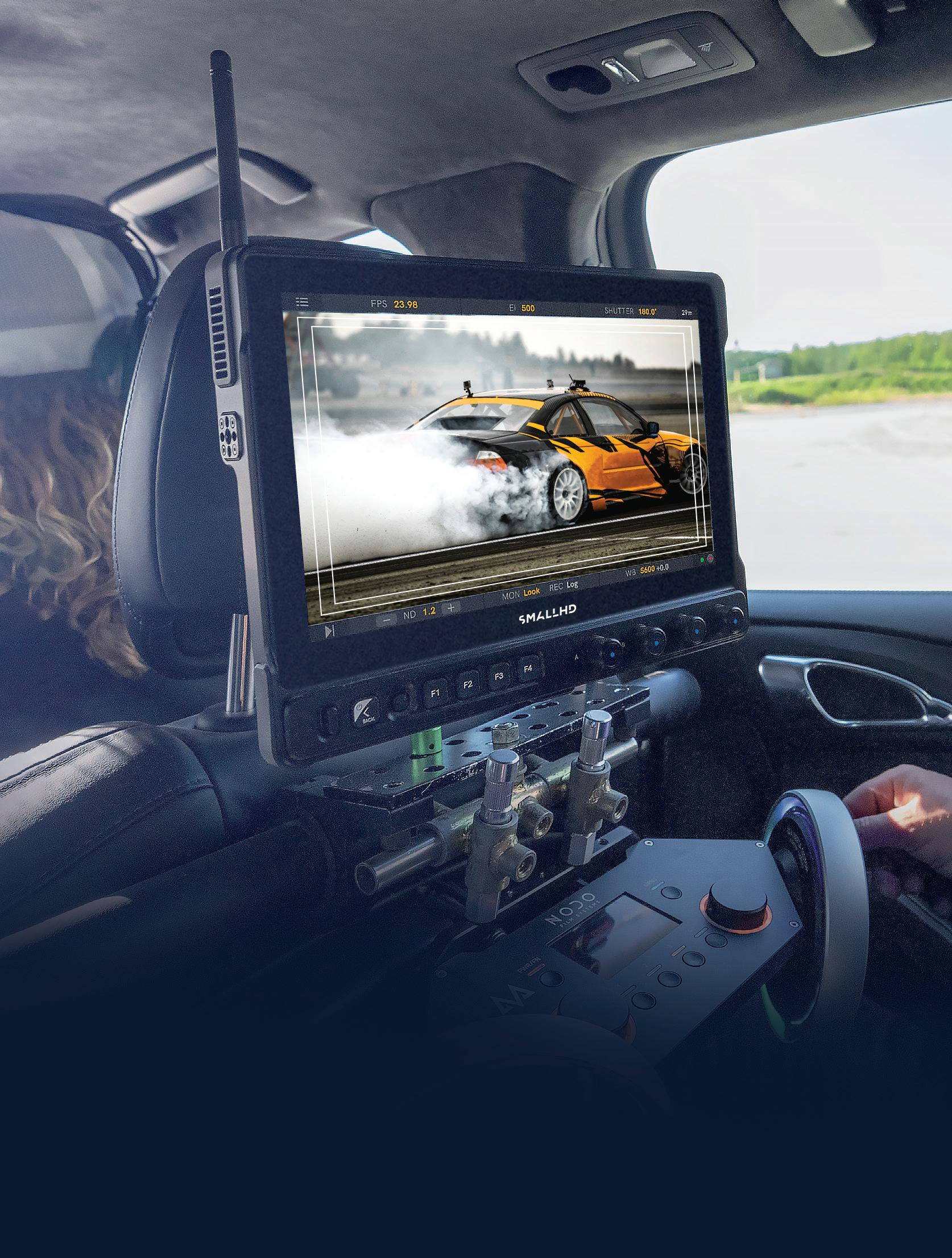

MAPPING THE AI STRATEGY
How Asharq News is embedding AI across its editorial and technical operations with a dedicated taskforce
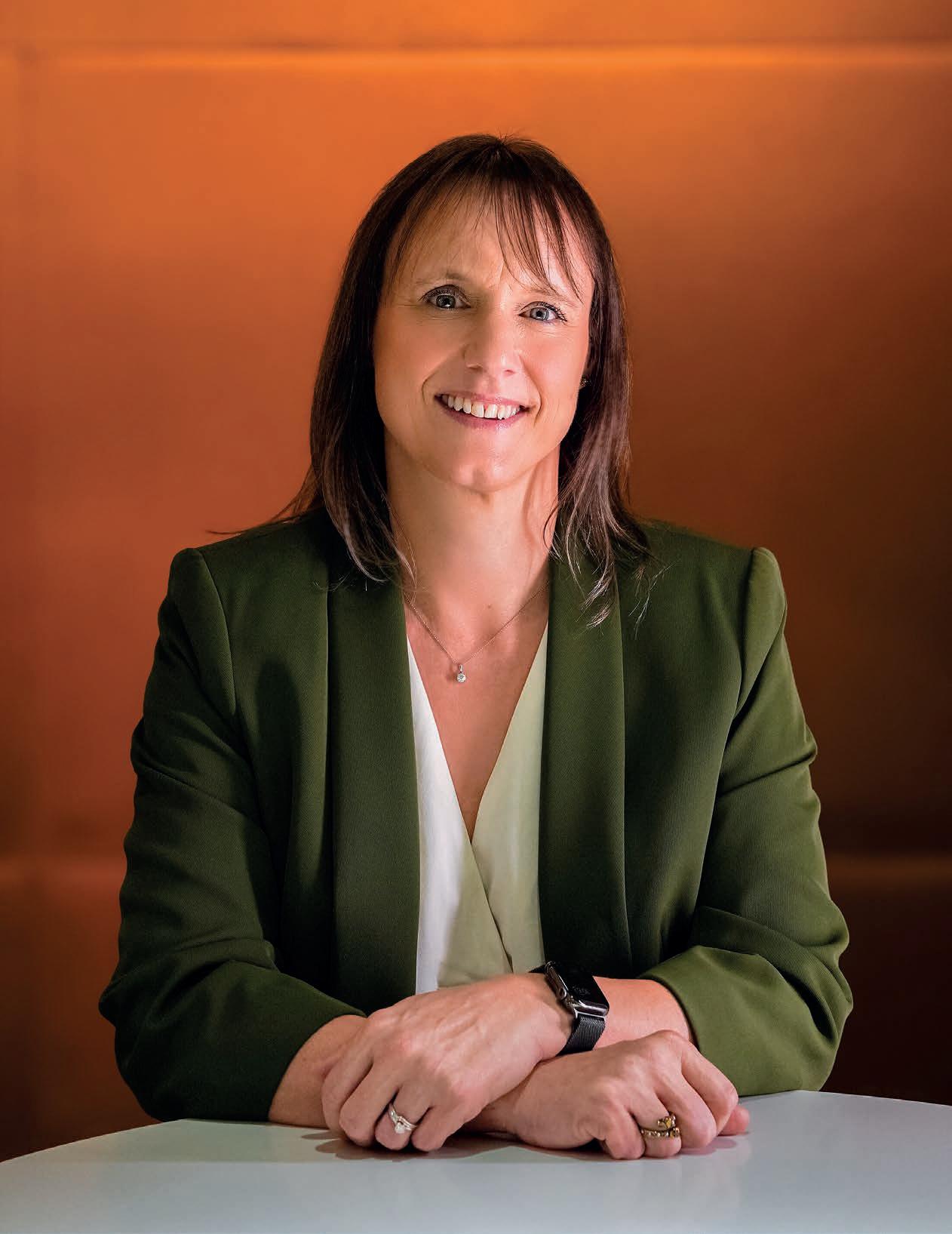
I‘M AN ARTIST



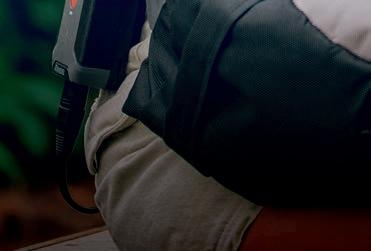

TONI MODROW
CAMERA OPERATOR
TONI MODROW
Who knew professional crew communication could feel this intuitive? I just grab a Bolero and go, knowing the Artist backbone is doing the heavy lifting behind the scenes.
I don’t have to think about the system – it just works, so I can really focus on capturing the perfect shot.“
ARTIST INTERCOM
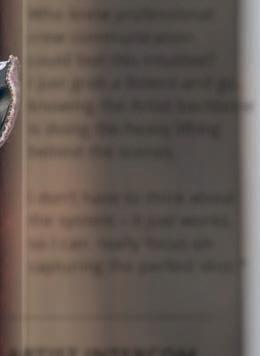



Professional and reliable live communications. Seamless integration of Riedel‘s SmartPanel and Bolero wireless intercom. Easily scaling from 16 to 1024 ports with flexible licensing.


GROUP
Managing Director Vijaya Cherian vijaya.cherian@cpipromedia.com
+971 (0) 55 105 3787
EDITORIAL
Editorial Director Vijaya Cherian vijaya.cherian@cpipromedia.com
+971 (0) 55 105 3787
Editorial Contributors
Kalyani Gopinath
Nusrat Ali
Urooj Fatima
Sub Editor Aelred Doyle
ADVERTISING
Group Sales Director Sandip Virk sandip.virk@cpipromedia.com
+971 (0) 50 929 1845 / +44 (0) 7516 993 862
FINANCE
Finance Executive Yonwin D’souza finance@cpipromedia.com
DESIGN & PRODUCTION
Art Director David Fraser design@cpipromedia.com
EVENTS
Events Executive Sabahat Khan events@cpipromedia.com
DIGITAL SERVICES
Web Developer Hafiz Muhammad Waqas IT@cpipromedia.com
FOUNDER
Dominic De Sousa (1959-2015)
PARTNER
Maria De Sousa
Published by

WELCOME
AI conversations are dominating boardroom discussions and feature regularly at our roundtables and panels. Many are already using it efficiently to summarise scripts, log footage, translate interviews or suggest graphics. But as AI moves into the mainstream, the question is where to draw the line.
This month, the UAE took a decisive step, issuing the world’s first standard requiring publishers and content creators to disclose the use of AI across all stages of content creation. It is not a restriction. Rather, it is a call for transparency and an acknowledgement of the role AI now plays in our everyday lives. The message is clear: AI is here to stay, but accountability must come with it. The move comes as the UAE also becomes the first country to enlist AI to draft its own laws and update legislation. It signals a future where machines do not just support decision-making but actively help shape the systems that govern us.
In this context, our cover story on Asharq News takes on deeper significance. Its AI Taskforce is building a model for how media organisations can deploy AI responsibly, with editorial oversight, human validation and governance built in at every stage. But not every broadcaster is on the same page. At a roundtable we hosted with Ross Video recently, attended by high-profile industry professionals, views on AI ranged from cautious optimism to concern. While some saw AI as a productivity tool or creative partner, others worried about the erosion of authenticity and the unchecked scale of automation.
This divergence points to a larger truth. It is not about whether we use AI, but how. The more we delegate to machines, the greater our responsibility to consistently uphold editorial integrity, respect cultural context and maintain public trust.
We’re working on a feature exploring how media houses across the Arab world are engaging with AI, if they are. Share your concerns, challenges and triumphs with us at vijaya.cherian@cpipromedia.com.

VIJAYA CHERIAN, EDITORIAL DIRECTOR
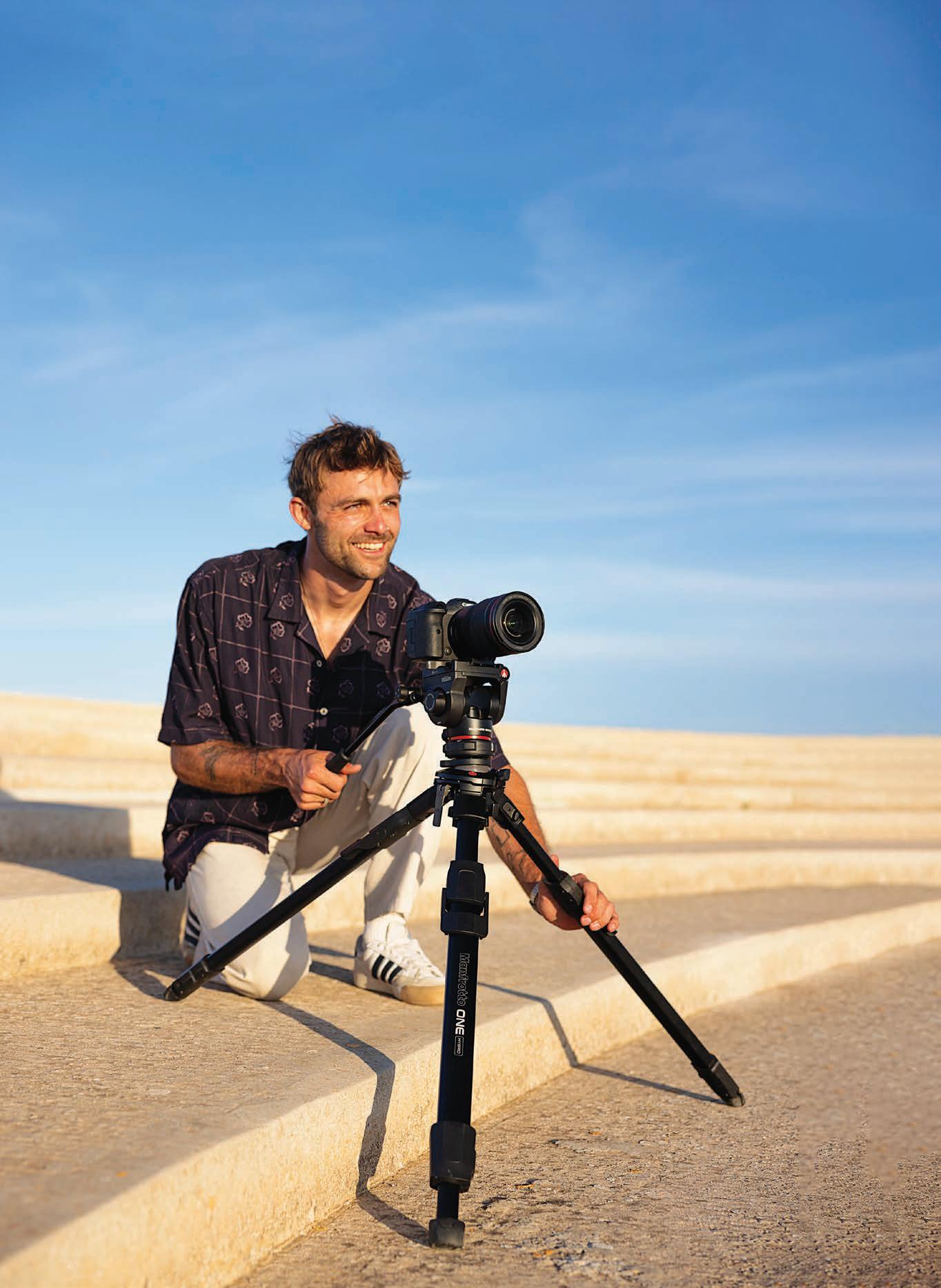











UPDATE NEWS
Abu Dhabi’s CMA signs deal with Fingerprint Media; NEP Group names Waleed Isaac President of Middle East & Asia; Dentsu launches MENA sports analytics arm; MediaCast opens MCX centre in Dubai; Viu launches Arabic reality show The Big Bang Birthday; and more 4
ROUNDTABLE
COVER KEEPING AI REAL IN THE NEWSROOM
Kathey Battrick, Head of Media Management and Library at Asharq News, talks to BroadcastPro ME about how the broadcaster’s AI Taskforce has implemented a measured and governance-first approach to embed AI across all its operations
NAVIGATING THE FUTURE OF BROADCAST TECH
MENA broadcasters discuss evolving production and delivery models at a BroadcastPro ME roundtable hosted with Ross Video

CASE STUDY
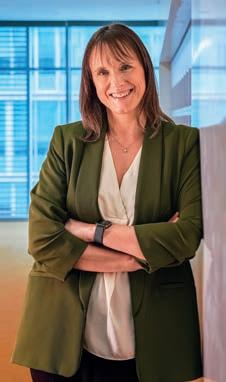
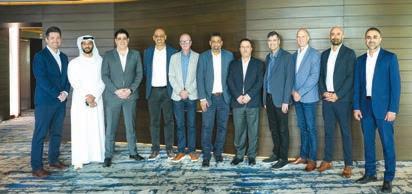
ACUN MEDYA EXXENTUATES STREAMING STRATEGY
With live sports and international ambitions, Acun Medya partnered with Accedo to scale its streaming platform Exxen for a global audience

OPINION PRIVATISATION OF GCC
MEDIA
CEO Yusuf Buti on how GCC governments are inviting private players into the media space
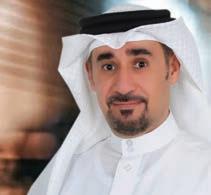
REVIEW
SHEDDING LIGHT ON THE NEW ASTRA IP
From rain to desert heat, Dubai-based lighting camera operator Ed Lister pushes the new Astra IP to its limits. With a redesigned build and upgraded features, this versatile light faces its toughest challenge yet. We find out if it delivers
GUEST COLUMN RETHINKING PERSONALISATION
From curation to scheduling, data is turning personalisation into a full-cycle strategy says Ivan Verbesselt

08/25
Viory expands outreach with new deals across Africa and Arab nations
Video news agency Viory announced alliances with Agence Tunis Afrique Presse (TAP) and the OIC States Broadcasting Union (OSBU) at the 25th Arab Radio and Television Festival, hosted by the Arab States Broadcasting Union (ASBU) in Tunisia, to build cross-regional bridges between Africa, the Middle East, Asia and the broader Global South.
Through its partnership
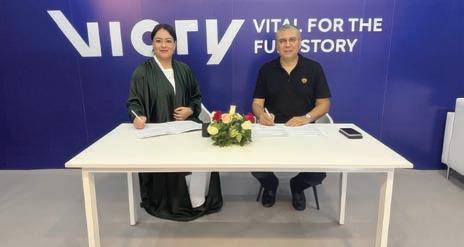
with TAP, Viory will facilitate content sharing and joint projects that will enrich national media ecosystems
NEP GROUP NAMES WALEED ISAAC PRESIDENT OF MIDDLE EAST & ASIA
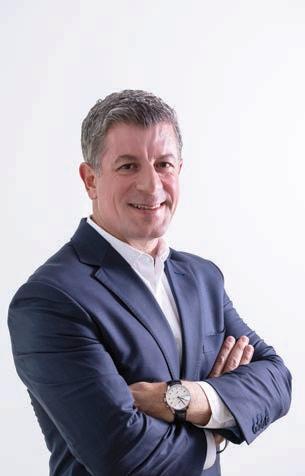
NEP Group has appointed Waleed brings more than 30 years of leadership experience and will oversee NEP’s operations in the UAE, Saudi Arabia, India and Singapore. His career spans major sectors such as large-scale events, energy, infrastructure and oil and gas, with leadership roles at GE, BrandSafway and most recently Loxam Group, where he served as Regional COO for the Middle East since 2022. Keep
and deepen understanding of local markets and cultural contexts. The agreement also establishes a framework
for sharing knowledge and raising journalistic standards to meet the demands of the digital era. The alliance with OSBU will give Viory access to an extensive array of media outlets.
Zulayho Siddikova, GM of Viory, said: “These new partnerships with TAP and the OSBU are instrumental to Viory’s ambitious outreach into Arab world, African region and beyond.”
CMA TIES WITH FINGERPRINT MEDIA TO BOOST ARABIC PRODUCTIONS
Abu Dhabi’s Creative Media Authority (CMA) has inked a three-year agreement with Fingerprint Media Production to advance Arabic-language film and TV production in the emirate. The deal includes a plan to deliver two new productions each year and draw at least 50% of the crew from the local talent pool. It also includes conducting two annual Arabic industry workshops and offering two placements each year for young creatives, as well as creating three full-time roles. CMA will support the
initiative through the Abu Dhabi Film Commission’s rebate scheme, offering a minimum of 35% back on eligible spend, and office space at Yas Creative Hub. Fingerprint Media, founded by director Dr Morcous Adel and actorproducer Eyad Nassar, is known for creating impactful Arabic narratives. It has wrapped production on Misuse, a six-part anthology drama filmed in Abu Dhabi. The show features notable Arab actors such as Eyad Nassar, Heidi Karam, Haggag Abdel Azim and Rasha Mahdi.
Zulayho Siddikova (l), GM of Viory, with Dr Amr Al Leithy, President of OSBU.
Dentsu launches MENA sports analytics arm; Samah Raydan to lead regional hub
Dentsu has launched Dentsu Sports Analytics (DSA) in MENA, expanding its global footprint with a focus on data-driven sports marketing solutions tailored to the region’s fast-growing sports and entertainment sector. The move signals the company’s continued
CONVIVA EXPANDS MENA PRESENCE WITH STRATEGIC HIRE
Conviva, a global player in real-time performance analytics and AI-driven insights, has strengthened its presence in the Middle East with the appointment of Rick Cordeiro as Account Manager. Based in Dubai, he will lead the company’s strategic partnerships with major OTT platforms across the region. His hiring signals Conviva’s deepening investment in the Middle East market, where it now operates with a dedicated team of three experts focused on accelerating customer success.
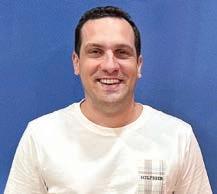
investment in helping brands harness the power of analytics to better engage with fans and stakeholders across the sports ecosystem. Leading this new regional hub is Samah Raydan, who has been appointed VP, DSA MENA. Based in Saudi Arabia, Raydan will
spearhead the platform’s operations and strategic development, bringing with him over 15 years of industry experience across marketing, partnerships, digital strategy and consultancy. He has previously held senior roles at Wasserman, formerly CSM Sport &
Entertainment, and Saudi Telecom Company (stc).
The expansion into MENA also follows the 2024 entry of Dentsu Sports International into the region, bringing together the agency’s global sports and entertainment capabilities under one cohesive brand.
AL ARABIYA DEPLOYS ROSS VIDEO CAMERA SYSTEMS AT NEW AL HADATH STUDIO IN RIYADH
News broadcaster Al Arabiya has built a new studio for its sister channel Al Hadath at Riyadh’s Diplomatic Quarter, with advanced camera robotics from Ross Video as one of the key tech features. The project features some of the longest U- and L-shaped Furio camera rails ever installed. With only eight months to complete the project, the channel partnered with Ross Video and its longtime systems integrator First Gulf Company (FGC) to deliver the vision on schedule.
Ross provided five Furio rail-based robotic camera systems and three CamBot pedestals, ensuring the production team could achieve highly

dynamic and automated camera movements with good precision. The Furio rails, spanning more than 40m in intricate U and L configurations, were the first installations of their kind in the region and required careful planning due to the studio’s tight elevation constraints.
Raed Bacho, Senior Broadcast Manager at
Al Arabiya, said the Ross team spared “no effort executing the design and mitigating risks to make sure everything worked perfectly … the new studio has quickly been recognised as one of the most advanced news production environments in the world, setting a benchmark for broadcast automation and visual storytelling.”
Al Hadath studio features some of the longest U- and L-shaped Furio camera rails ever installed.
Radio 47 launches Africa’s first IP-based broadcast hub with Lawo technology

Radio 47, under Cape Media Ltd, has launched Africa’s first fully IP-based, automated hybrid broadcast facility in Nairobi. The advanced media centre integrates radio, television, livestreaming and remote production into a single highly flexible system. The facility was planned and implemented by Kigali-based Mediacity Ads Ltd, an expert in IP
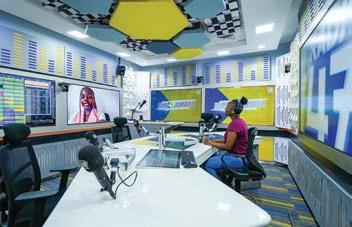
broadcast systems and the regional partner of German tech company Lawo.
The new centre utilises technology from a host of global manufacturers, including Lawo, MultiCam Systems, AVT Audio Video Technologies, Voceware, Cleanfeed, Genelec, Telos Alliance, PTZ Optics and OptiSign. The centre’s IP-native infrastructure is powered by Lawo’s crystal
broadcast consoles and the Power Core DSP engine, using RAVENNA/AES67 for audio-over-IP networking. Each of Radio 47’s three new on-air studios is outfitted with Lawo crystal consoles connected to a central Lawo Power Core, a high-density, modular I/O and mixing engine capable of handling extensive audio routing, digital signal processing
and multiple studio operations from a central hub. The Power Core’s modular design includes support for analogue, AES3, Dante and MADI formats, offering compatibility with both legacy and modern broadcasting equipment.
An AES67-compliant IP backbone connects all studios, control rooms and editing suites, ensuring real-time, lossless audio transmission. The RAVENNA networking standard enables any audio source, from live feeds to phone calls, to be routed instantly across the system without the need for physical cabling or manual intervention.
SAWA RIGHTS AND W-SPORT BRING WOMEN’S SPORTS CHANNEL TO MENA
SAWA Rights Management, a content distribution company under the SAWA Entertainment Group, will distribute W-Sport’s 24-hour linear channel across MENA, reaching both residential subscribers and commercial venues for the first time, as part of a deal between the two companies. The channel has already launched on du TV, the UAE’s telecom
and digital services provider, and will now be made available to a much wider audience through SAWA Rights Management’s extensive distribution network.
W-Sport’s programming features a line-up of live events, including up to ten football matches every week from top international

competitions such as England’s Women’s Super League, Germany’s Frauen Bundesliga, Italy’s Serie A Femminile, Sweden’s Damallsvenskan and the USL in the United States. Viewers will also have access to live coverage of the Super League Triathlon this summer, along with selected tournaments in tennis, netball, field hockey and athletics.
Above, Fred Martin Kiwalabye from Mediacity Ads Ltd, Lawo’s regional partner in Kigali; and right, Martha_Oundo, presenter at Radio 47.
Introducing Blackmagic Design’s biggest live production switcher with a massive 80 standards converted 12G-SDI inputs and 48 independent 12G-SDI outputs! ATEM 4 M/E Constellation 4K Plus includes advanced features such as DVEs, media players, advanced chroma keyers, multiviews and more! The Fairlight audio mixer includes a compressor, limiter and 6 band parametric EQ on each input.
Standards Converted 12G-SDI Inputs!
The ATEM 4 M/E Constellation 4K Plus features a massive 80 independent 12G-SDI inputs, each featuring its own dedicated up and cross converter. That means it’s possible to convert any 1080p input source to the video standard of the switcher! So each switcher SDI input can run a completely different television standard and it all just works!
Customizable 12G-SDI Outputs
ATEM Constellation has a massive number of independent 12G-SDI outputs. These outputs are powerful because you can independently route any SDI input or internal source to each SDI output. That’s perfect for running independent feeds to stage screens, master recorders and streaming processors. All SDI outputs contain RP-188 timecode, SDI camera control, tally and talkback.

Includes Multiview with Labels, Tally and Meters
The built in multiview lets you monitor multiple sources on a single monitor. All external SDI inputs, plus all internal video sources can be routed to any view. The multiviews are fully customizable and can be independently set to 4, 7, 10, 13 or 16 simultaneous views. That’s a massive 64 views across 4 monitors! You can also add a tally indicator, source label and VU meters as an overlay on each view.
Choose from Hardware or Software Control Panels
Included with ATEM Constellation is a free software based control panel for Mac and Windows. When you need more power, you can add an ATEM Advanced Panel with broadcast quality buttons, knobs and a t-bar fader. These panels work with all ATEM switchers, even the massive ATEM 4 M/E Constellation 4K Plus, so you are always ready for future video standards.
Advanced Panels From US$3,355
Introducing the New ATEM 4 M/E Constellation 4 K Plus! Add the speed and power of an ATEM Hardware Panel! ATEM 4 M/E Constellation 4K Plus US$14,035


MediaCast launches second MCX centre in Dubai
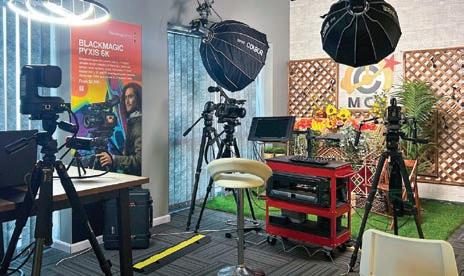
Dubai distributor MediaCast launched its second regional MediaCast Experience (MCX) centre last month. The new Dubai centre serves as an interactive hub where broadcasters, filmmakers, musicians, podcasters and students can explore end-to-end creative media workflows. From live video production and immersive audio to podcasting, the centre is designed to demonstrate real-world use
cases across a wide range of production environments. A fully operational and experiential space, MCX Dubai has nine zones where visitors can test high-end gear such as Blackmagic Design’s professional film and broadcast cameras in a mock studio, experiment with BirdDog cameras and Apogee microphones in a podcasting set-up, or explore post-production tools in a dedicated
DaVinci Resolve editing suite. An interview area with changeable backdrops and a chromakey zone add to the flexibility of the space, led by Vizrt, while integrated IP infrastructure connects the various zones, with Kiloview, NETGEAR and Telycam showing how AV-over-IP set-ups work in hybrid broadcast environments. MCX also includes a Sonic Room, an immersive audio suite with a multispeaker array for 3D and spatial sound mixing. Powered by Universal Audio, IK Multimedia, Dynaudio and Warm Audio, to name a few, MediaCast routinely runs training sessions with UAE universities, government media offices and private companies.
DIPESH MAKWANA JOINS ALIBABA CLOUD AS HEAD OF GEMS DIVISION
Alibaba Cloud has appointed Dipesh Makwana as Head of its GEMS (Gaming, Entertainment, Media and Sports) division, to lead regional growth and digital transformation strategies across these fast-evolving sectors. Based in Dubai, Makwana brings more than two decades of
experience in broadcast technology, live production and cloud services across the MENA region and Asia. Prior to joining Alibaba Cloud, he held senior positions with Vizrt, wTVision and Riedel Communications.
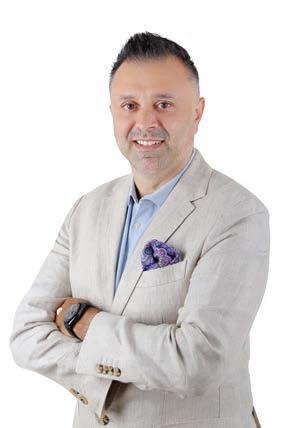
RMG, 1001 OPS PARTNER TO EXPAND IN JORDAN AND IRAQ
Roya Media Group (RMG) has signed a content distribution agreement with UAE digital firm 1001 OPS, the operator behind Iraq’s 1001 streaming platform, to strengthen digital entertainment offerings in Jordan and Iraq through a content-sharing model. Roya TV will grant exclusive access to its premium digital channels and original productions on 1001’s streaming service, while 1001’s series and entertainment programming will be featured on the roya.tv platform.
Fares Sayegh, CEO of Roya Media Group, said: “By joining forces with 1001 OPS, we’re expanding our digital footprint and enabling a richer, more diverse entertainment experience for viewers across the region.”
As part of the deal, Roya’s content will be made available exclusively on the 1001. tv platform within Iraq, ensuring compliance with territorial rights and content protection standards.
The new MediaCast Experience Centre in Dubai.
Viu launches Arabic reality show The Big Bang Birthday
Viu, PCCW’s pan-regional OTT video platform, has launched its latest Arabic reality original, The Big Bang Birthday, which offers viewers an intimate glimpse into contemporary Arab identity and friendship.
The show follows four popular creators as they secretly plan a birthday celebration for Egyptian digital star Hadeel Marei, whose bold humour and expressive style have earned her more than 2m Instagram followers. As the friends orchestrate the surprise, viewers
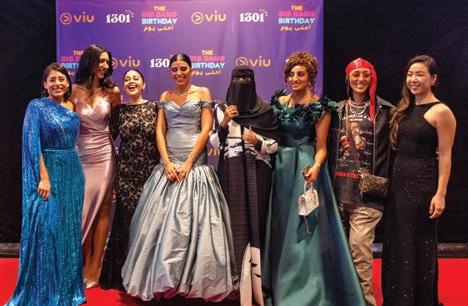
see their authentic personalities emerge against the backdrop of Abu Dhabi’s landmarks. What starts as a simple party evolves into a thoughtful exploration of connection
SPACETOON TEAMS UP WITH ALJ SISTERS FOR ANIMATED SERIES
Spacetoon has partnered with the ALJ Sisters, a trio of young creators from the Gulf, to develop a new animated series titled Happiness Spreaders that aims to bring their real-life charm to the screen in a 10-episode animated production. Each six-minute episode will cater to Gen Z and Alpha audiences. Production is in progress, with the series set to premiere in early 2026. The ALJ Sisters have

built a strong fanbase throughout the Gulf. Their YouTube channel has over a billion views and they have more than five million followers across social media platforms.
and identity, culminating in a heartfelt moment when Marei receives her unexpected gift.
Samer Majzoub, GM of Viu MENA, said: “The Big Bang Birthday exemplifies
Viu’s commitment to Arabic original productions and locally rooted storytelling that bridges entertainment and cultural insight. The authentic emotion and relatable production style of this female-led production connect us to the cultural heartbeat of Saudi Arabia, UAE and the rest of the Arab region.”
Directed by Lebanese filmmaker and lecturer Farah Alameh, The Big Bang Birthday combines polished visuals with documentary realism, capturing the cast’s relationships with sincerity.
CO-PRODUCTION SALON AND SAUDI MEDIA FORUM SIGN THREE-YEAR DEAL

The Co-Production Salon has announced a strategic three-year partnership with the Saudi Media Forum to launch an enhanced and expanded edition of the Salon in Riyadh. The Co-Production Salon brings together major production houses, influential media investors, leading writers, producers and emerging
Saudi talents. It accepts only 30% of applicants, ensuring that participants represent the highest tier of talent. The Riyadh edition is aimed at helping regional and international media companies looking to invest in Saudi creative talent, engage in Arabic-language co-productions or establish new partnerships across the Arab media landscape.
Popular Arab influencers star in The Big Bang Birthday
Heba Korayem, founder of Co-Production Salon, flanked by officials from Saudia Media Forum.


KEEPING AI REAL IN THE NEWSROOM
With multilingual indexing, proprietary datasets and AI validation, Asharq News is building one of the region’s most advanced AI operations.
In an exclusive interview with Vijaya Cherian, Kathey Battrick discusses how the network’s AI Taskforce is executing its AI strategy
Artificial intelligence (AI) is the buzzword in most boardrooms today, and even if a broadcaster hasn’t started work on it, it is the core of many tech and strategy conversations. Few broadcasters have approached it as systematically and pragmatically as Asharq News. Rather than rushing into flashy integrations, the Arab broadcaster has taken a measured, governance-first approach, embedding AI across its editorial and technical operations through a dedicated cross-functional taskforce.
At the helm of this initiative is Kathey Battrick, who leads Asharq’s AI Taskforce, and is Head of Media Management and Library at the network. But as she is quick to point out, this is not a one-person mission, nor is it driven by hype. “At Asharq, we recognised early on that AI would have a transformative impact on the media industry. We established the AI Taskforce to proactively shape how it is adopted across our organisation. Its purpose is to ensure that our use
of AI aligns with editorial standards, legal and regulatory obligations and broader strategic objectives.”
It includes editorial, technology, legal and HR committee members who define strategy and governance, and AI champions who contribute technical expertise from areas such as engineering, digital technology and project management. That diversity of perspective has proven essential, especially as the group developed the broadcast network’s AI principles, ethical policies and internal oversight systems.
“We took a structured, collaborative approach,” Battrick remarks. “First, we introduced the Taskforce’s objectives and gathered concerns and expectations from across the business. From there, we defined our AI principles, objectives and success criteria.”
Responsibilities were assigned early on and a clear governance structure was built to define decision-making authority. This was followed by internal workshops and awareness-building
sessions to communicate the policy and support alignment before any rollout began. That foundation led to the creation of editorial guidelines, a formal AI policy, and a mechanism for reviewing and approving all AI-related initiatives to ensure consistency and accountability.
Tracking AI-assisted journalism
What sets Asharq’s efforts apart is how deeply editorial objectives are embedded in its AI strategy. “We champion the idea of AI-assisted journalism – using AI to enhance and support editorial work,” says Battrick. “Editorial colleagues were part of the AI Taskforce from day one, helping to shape the policy and ensure our approach reflects newsroom values and standards.”
One of the clearest examples of this vision in action is Asharq’s use of AI for multilingual scene indexing. Originally built using off-the-shelf computer vision services, the system has evolved significantly. “Over the past year, we’ve moved towards a more advanced multimodal approach. This now allows us to generate human-like scene descriptions in both English and Arabic, significantly improving the richness of our metadata.”
This metadata, crucial for search and content retrieval, is validated by Asharq’s news librarians and seamlessly integrated into platforms like Avid, Mimir and the company’s own internal search system. “It has transformed how our production teams work. They can now instantly locate specific shots, search in their preferred language, and we have integrated the content with various production platforms and tools so regardless of broadcast or social production workflows, it can be accessed.”
Each media asset goes through
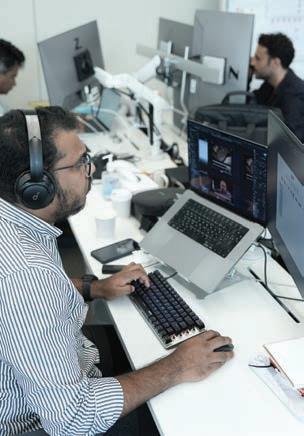

a three-stage enrichment lifecycle: first at the point of ingestion, then following AI tagging, and finally after human validation by Asharq’s news librarians to ensure editorial accuracy and consistency.
Context and customisation
Asharq’s collaboration with AI vendor Moments Lab played a significant role in the early phases of its indexing work, and the partnership remains ongoing. However, the process was far from plug-and-play.
“One of the key learnings from our early work with Moments Lab was the importance of context and customisation,” says Battrick. “While their platform incorporates some off-the-shelf models as part of its architecture, it also allows for significant
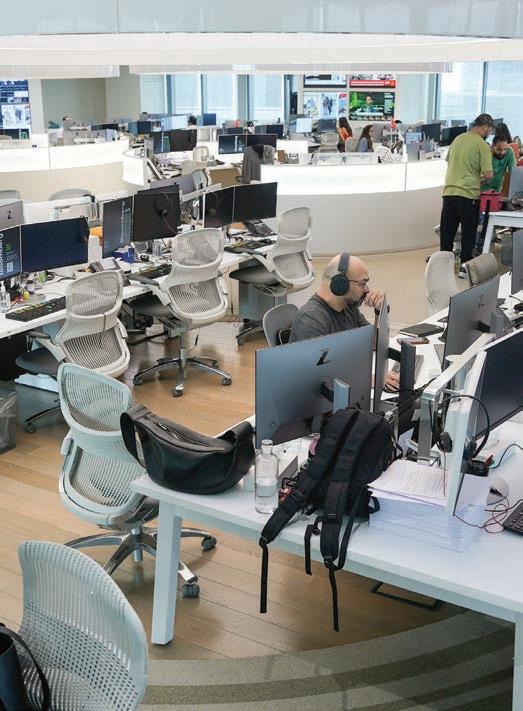
tailoring. Together, we worked to adapt and refine the solution to better serve our editorial workflows, particularly for Arabic-language content and region-specific topics.”
That gap led Asharq to develop its own proprietary dataset of Arab public figures and business leaders. “We began by identifying the individuals most frequently featured in our coverage, including our news anchors, reporters, politicians and business leaders. It was built using only content that falls under our copyright, based on footage and imagery from our own broadcasts and productions.”
The dataset, maintained and expanded by the news library and data teams, includes detailed profiles with name variations and professional designations in both Arabic and English.

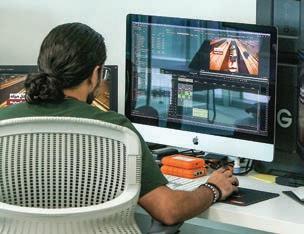
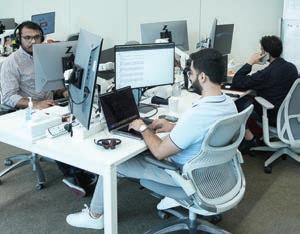

It is actively maintained by Asharq’s news librarians, who regularly update it as new figures emerge or public roles evolve. This has dramatically improved both tagging accuracy and content discovery. “Journalists can now search by a person’s name, even if they’re only mentioned visually or their name was misspelled in original transcripts.”
On the backend, Asharq’s engineers have worked closely with R&D and Moments Lab to ensure metadata flows seamlessly through the system. “Every media asset is updated a minimum of three times: once when it’s ingested into our system, again after AI-generated metadata has been applied, and a final time once it has been reviewed and updated by a news librarian. This layered enrichment process ensures that the metadata
At Asharq, we recognised early on that AI would have a transformative impact on the media industry
KATHEY BATTRICK, HEAD OF MEDIA MANAGEMENT AND LIBRARY, ASHARQ NETWORK
remains accurate, comprehensive and consistent across platforms.”
For journalists and producers, the impact is tangible. “They do not need to rely on file names, folders or memory to locate footage, and they can search in either Arabic or English.
AI-generated metadata, validated by our news librarians, includes scenelevel detail, person detection and contextual tags, making it easy to pinpoint the exact shot they need.”
News librarians also apply an additional verification layer that flags common misidentification issues – such as similar-looking individuals or frequently confused name variants – helping ensure a higher degree of accuracy, especially in multilingual news environments.
Closing gaps in global models
The newsroom has also invested in improving generative AI’s understanding of Arab contexts. Asharq is presently working with Moments Lab on a research collaboration aimed at benchmarking AI video understanding using its own curated datasets. “A key long-term goal of the project is to improve how generative AI describes content from the Middle East, an area that remains significantly under-represented in most AI training datasets and current state-ofthe-art video understanding models.”
Evaluation of the AI models combines both technical and editorial review, Battrick explains. “We assess AI performance not just on technical accuracy like scene detection or tagging, but also on how well it understands context and cultural relevance.
Recognising important people, places or topics in our region requires more than pattern matching – it requires awareness of meaning and significance.”
That’s where feedback remains critical. “Our news librarians are central to this – spotting inaccuracies, correcting tags and highlighting areas where the model may misinterpret content.” This is shared with Moments Lab through a structured feedback loop, ensuring model improvements are based on both data and real editorial experience.
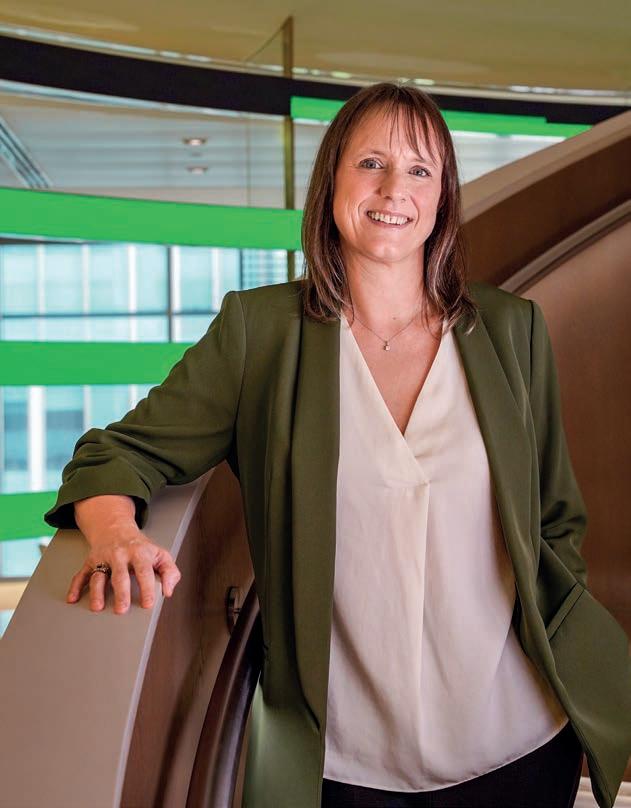
Challenges, caution and future focus
While Asharq has made significant progress, Battrick is clear about the hurdles ahead. “The biggest opportunities are in real-time translation, smart clipping and automated rights management. The biggest challenges? Managing bias, building trust in AI outputs and ensuring that systems can scale across different languages and content types without compromising editorial standards.”
Balancing innovation and oversight remain central to Asharq’s strategy. “We’ve set up an AI Taskforce that brings together people from across
We assess AI performance not just on technical accuracy like scene detection or tagging, but also on how well it understands context and cultural relevance
KATHEY BATTRICK, HEAD OF MEDIA MANAGEMENT AND LIBRARY, ASHARQ NETWORK
the business including editorial, tech, legal and operations, so that new ideas are explored with the right oversight from day one. Our governance isn’t a separate layer; it’s built into how we work.”
Every new AI project starts with a review of objectives, risks and criteria for success, ensuring that tools support actual newsroom needs. That operational pragmatism is also evident in the approach to training. “Training is a big focus for us at Asharq; we’re working together with our HR team to make sure it’s embedded into how we roll out and scale AI.”
Prompt engineering workshops and multiskilling initiatives are now in place, not just to prepare staff for AI but to support evolving production practices over time. “This is about futureproofing our people and ensuring they feel confident and prepared as their roles evolve.”
What lies ahead
Looking ahead, the roadmap includes more internal innovation and deeper collaborations. But for Battrick, the foundation has already been laid.
“It’s such an exciting time for AI technology, it’s hard to pick just one thing, but I’m particularly proud of setting up the AI Taskforce. It’s given us a clear and practical way to explore innovation while keeping governance front and centre.”
Asharq’s experience shows that real transformation doesn’t come from adopting the latest tool; it comes from designing systems that are flexible, responsible and built for modern newsrooms. In a region where many broadcasters are still defining their AI strategies, Asharq News is already showing what it means to operationalise AI at scale, on its own terms.
Kathey Battrick says her team is working closely with the broadcast network’s HR department to ensure training is built into the rollout and scaling of AI.

HOME with a View.
Lawo’s HOME Apps processing platform empowers broadcasters to create efficient, dynamic media facilities with maximized infrastructure utilization. Paired with Lawo’s .edge SDI-to-IP gateway, the new HOME Intelligent Multiviewer minimizes bandwidth and CPU usage by intelligently selecting optimal downsized video proxies for layouts.
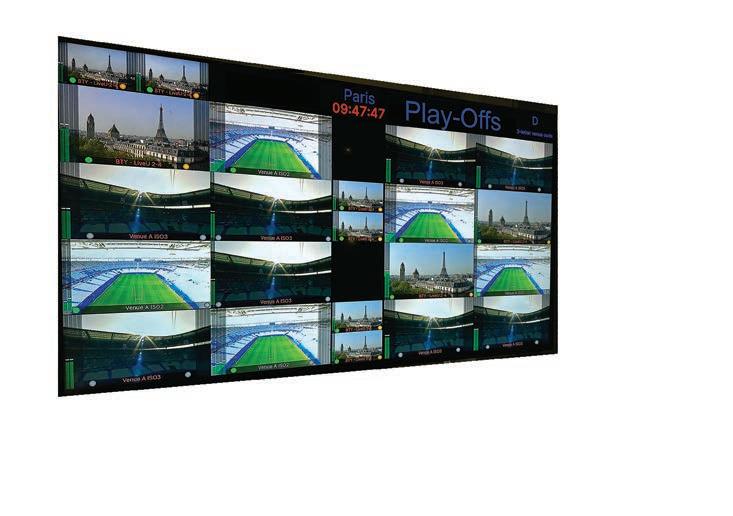

NAVIGATING THE FUTURE OF BROADCAST TECHNOLOGY IN THE MIDDLE EAST
From SMPTE ST 2110 and hybrid cloud deployments to AI-enhanced workflows, MENA broadcasters are transforming production and delivery models while contending with unique regional challenges in a rapidly evolving media landscape
As the lines between on-demand and linear broadcasting blur, content creation and delivery have become more complex than ever. From live sports to rolling news and premium entertainment, broadcasters are under pressure to move faster, do more with less and meet shifting viewer expectations across platforms. Reliable, scalable workflows powered by new technologies have reshaped how content is produced and distributed, driving innovation in everything from cloud migration to AI-powered automation. This backdrop set the stage for a high-level tech roundtable organised by BroadcastPro ME in partnership with Ross Video, where regional CTOs and industry leaders shared how their organisations are adapting and what the future might look like. The speakers at the roundtable were:
• Abdulaziz AlEissaee, Senior Specialist for AI at Abu Dhabi Media
• Amill Lone, CEO of Saudi Sports Company
• Aus Al Zubaidi, CISO, Director of IT and Media at MBC Group
• Brad Eliot, CTO at International Media Investments
• Hisham Sahrij, CTO at 1001 TV
• Omar Alzoubi, Head of Engineering Systems at Dubai Media
• Peter Van Dam, Chief Broadcasting Officer at the Saudi Pro League
• Shabbir Hussain, CTO at CNBC Arabia
The discussion was moderated by Ross Video CEO David Ross and Deepraj Sandhar, Senior Sales Manager for the Middle East, Gulf, Pakistan and Africa. David Ross highlighted Ross Video’s dual role as a live video production company and content creator. He noted
the pressure on CTOs from declining revenues and the “war for eyeballs”, and emphasised the focus on efficiently creating high-quality content amid tightening budgets rather than on subscription video on demand (SVOD) or ad-supported video on demand (AVOD) platforms. He also briefly highlighted Ross Video’s 33 years of consecutive growth and operational scale both globally and in the Middle East, as well as the 19 acquisitions the company has made in the last 14 years.
SMPTE ST 2110 and the IP transition
The conversation shifted to SMPTE ST 2110 as broadcasters shared how they are adapting operational models in a cloudconnected, IP-driven environment.
Brad Eliot, CTO at IMI, the parent company of Sky News Arabia, acknowledged the challenges faced by traditional broadcast engineers in adapting to new technologies, while affirming the reliability of SMPTE ST 2110: “Transitioning to 2110 presents a steep learning curve for legacy engineering teams, and the workflows are not initially as intuitive as traditional systems. That said, the technology is solid and we are making good progress with its adoption and use.”
Eliot also highlighted the diverse technical landscape across the MENA region, noting the wide disparity in infrastructure and viewer expectations. “In markets like Egypt much of the audience still relies on SDI-based viewing, while elsewhere we’re seeing increasing demand for OTT, real-time streaming and ondemand content. The real challenge lies in how we manage production and distribution to meet these varied needs while maintaining cost efficiency and audience satisfaction.”
Peter Van Dam, Chief Broadcasting Officer at the Saudi Pro League, questioned the need to move away

from the “magical standard” of SDI.
“While SMPTE 2110 is reliable and efficient, running it in an IT-driven environment means starting with the switch architecture. At large scale, hardware-based routing quickly becomes unsustainable, so softwaredefined approaches are essential. For many broadcasters in the Middle East, the format doesn’t matter. Here it is more about the social aspect of watching a game together with others.”
The right network design depends on operational priorities. Each deployment needs to balance flexibility, performance, lifecycle cost and maintainability.
“To understand broadcast infrastructure today, we have to stay grounded,” said MBC Group’s Aus Al Zubaidi, CISO, Director of IT and Media. “No matter who the vendor is,
We adopted a cloud-first mindset several years ago, but we’ve remained strategic and selective in execution
AUS AL ZUBAIDI, CISO, DIRECTOR OF IT AND MEDIA, MBC GROUP
vulnerabilities are a given. Patching, hardening and maintaining resilience under continuous change is now part of the operational baseline.”
Omar Alzoubi, Head of Engineering Systems at Dubai Media, pointed out
that many professionals tread with caution with the transition to IP: “Vendors continue to invest in 12G-SDI and established standards.” But he added that one of IP’s key advantages is its flexible, signal-agnostic network ports that can support multiple formats depending on configuration and bandwidth. “This flexibility allows broadcasters to dynamically route signals and efficiently scale their infrastructure as needs grow.”
He also pointed out that while IP performs well in single-vendor environments, interoperability remains a challenge in the multi-vendor set-ups typical of many broadcast facilities. “The move from SDI to IP is not just about replacing cables; it’s a fundamental shift in technology, workflow, mindset and skillset,” he said, adding that IP adoption is progressing steadily, driven

by maturing standards and improved compatibility. He cautioned, however, that it requires careful planning, especially in hybrid environments.
Shabbir Hussain, CTO, CNBC Arabia, agreed. “While nothing has changed operationally, engineering remains complex. The biggest challenge today is finding the right talent who understand both broadcast and IT, and how we train them.”
While SMPTE 2110 remains a widely adopted standard, David Ross explored alternatives like direct memory access (DMA)-based video at the roundtable. He explained that with DMA one device can write directly into another’s memory space, allowing the receiving computer to focus entirely on video manipulation rather than spending resources on sending and receiving packets. He noted that this approach eliminates the need for frame buffers, unlike SMPTE 2110, where everything requires a frame sync. In contrast to SDI, which flows naturally, 2110 involves more processing overhead – something DMA helps reduce significantly.
Building hybrid cloud strategies
The discussion then moved to cloud strategies. Trying to manage workloads on specific clouds
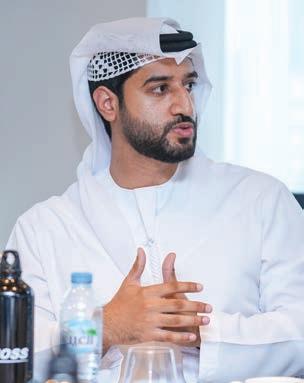

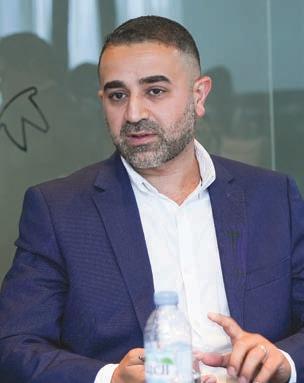
whenever possible and adopting that as a standard infrastructural code makes it easier when moving massive workloads on cloud, the panel agreed. However, they noted that regional and operational constraints still demand a selective, well-planned approach.
“We adopted a cloud-first mindset several years ago, but we’ve remained strategic and selective in execution,” clarified Al Zubaidi. “Not every workload belongs in the cloud. Many make more sense to keep on-premises due to reliability, cost predictability or operational integration. Our linear broadcasting stack, for example, remains largely on-site. It’s stable, fully amortised
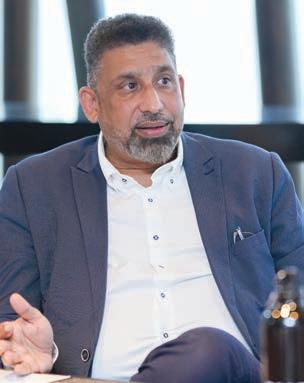
and well understood by our teams. When we need agility or burst capacity, we expand into cloud environments. A diversified hybrid strategy gives us control, flexibility, and avoids overreliance on any single platform.”
Amill Lone, CEO of Saudi Sports Company, remarked that it “can’t go fully on cloud in Saudi Arabia … we must maintain a regional presence, and most of our deployments are developed in close collaboration to support this. We are leveraging technology, though some fine-tuning is still needed, especially in live football, where speed is critical and where there are strong opportunities for monetisation.”
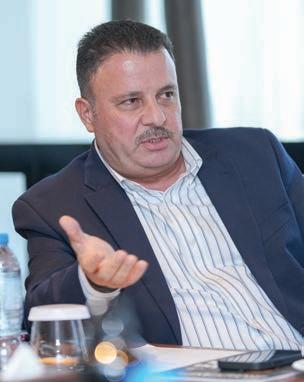
Aus Al Zubaidi, CISO, Director of IT and Media, MBC Group.
David Ross, CEO, Ross Video.
Abdulaziz AlEissaee, Senior Specialist for AI, Abu Dhabi Media.
Omar Alzoubi, Head of Engineering Systems, Dubai Media.
Shabbir Hussain, CTO, CNBC Arabia.
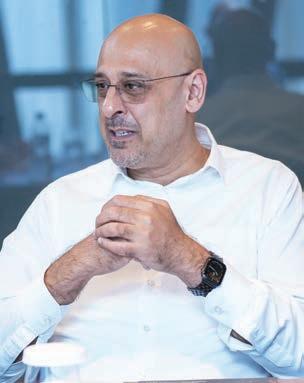
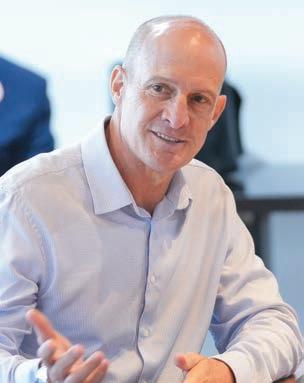

How AI is reshaping content creation and revenue models
As businesses manage complex streaming workflows, automation, powered by AI, is playing a growing role in streamlining processes. In news production, the goal is to move information efficiently from reporters to the control room and ultimately to on-air broadcast. AI systems assist by making real-time decisions on whether to include an over-theshoulder graphic, what templates or visuals to apply, and how to format content for different platforms.
But there is also an ongoing discussion in newsrooms about
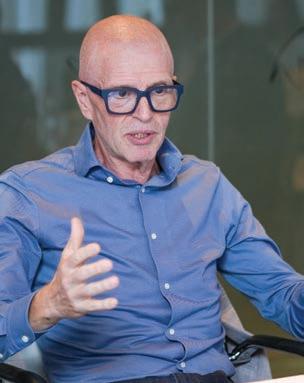
balancing authentic journalism with the increasing use of generative AI. “Fake news detection is a major focus for us,” said Eliot. “A significant portion of our editorial workflow is dedicated to verifying the authenticity of incoming reports. Using AI to create visual assets from conflict zones where we can’t safely send crews is one thing; applying it to core journalistic storytelling, however, is another.”
Abdulaziz AlEissaee, Senior Specialist, AI, Corporate IT at Abu Dhabi Media (ADM), said the network has implemented several AI use cases, including a smart editor tool that generates articles from trusted sources.
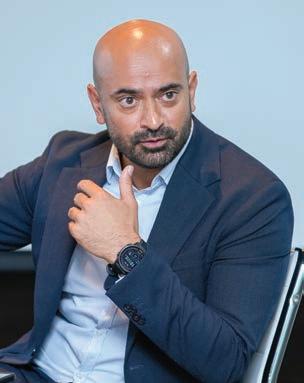
“You could, for example, select an article about an event in Germany and integrate it with coverage of a local event. We’ve also created our own avatars that can quickly turn an article into a video, making it appear as though a real person is speaking on social media.”
He added that ADM has strict policies in place to ensure transparency with regard to how it uses AI. He further noted that ADM showcased a similar proof-of-concept (POC) at Gitex last year but pointed out that “the lack of data sets is an area that needs improvement”. Hussain pointed out that CNBC Arabia is using AI “for live Arabic transcription for the US stock closing every day … being a financial channel, getting the precise terminology is vital. We’ve trained the AI to make it context-oriented and built a specialised finance glossary, which is about 85% complete.” He pointed out challenges such as converting feeds from English to Arabic and transcoding from Avid to mp4, which AI upgrades are helping to accelerate.
Dubai Media has also conducted several POC projects including voice-to-text services aimed at enhancing metadata for archiving, with some systems demonstrating
Amill Lone, CEO, Saudi Sports Company.
Brad Eliot, CTO, International Media Investments.
Hisham Sahrij, CTO, 1001 TV.
Deepraj Sandhar, Senior Sales Manager for the Middle East, Gulf, Pakistan and Africa, Ross Video.
Peter Van Dam, Chief Broadcasting Officer, Saudi Pro League.

high accuracy even in early machine learning stages, added Omar Alzoubi. David Ross pointed out here that Ross Video worked with Fox News during the US election on an AI feature that synchronised election graphics with live speech. “For election updates, the channel had an announcer showing different states and counties, some with the same names. Traditionally, it was very difficult for a person in the control room to keep up. We built an AI system and tied that with augmented reality to create all the states. As the announcer spoke, it went through a speech-to-text processor and then back to control graphics in real time. The data came from conventional election data sources, and it ran more naturally than any election graphics had ever done before.”
Most of these transformations have primarily been evident in sports broadcasting, commented Van Dam. “We work with a company called Sports Life. They collect a large amount of player data for injury prevention. We are trying to see how we can extract that data to create graphics and give that additional experience to the fan. If I look at Formula One with all the data – how fast they go, which gear
they are in – that’s the entertainment part, and this is where data becomes crucial and AI plays a critical role.”
OTT platforms provide further AI implementation opportunities, especially in content writing systems, added 1001 TV’s Sahrij. “We have explored many AI engines and systems, most recently commentator dubs for LaLiga in Spanish. We had an Arabic commentator, but the 30-40-second delay on the live stream was a deal-breaker. However, we’re using technology for VOD, not for live.”
Using AI to create visual assets from conflict zones where we can’t safely send crews is one thing; applying it to core journalistic storytelling, however, is another
BRAD ELIOT, CTO, IMI
He also noted the use of AI for personalisation. “We cannot have something as close as Netflix or YouTube, but we are using the same model –testing engines such as server-side ad insertion (SSAI) that TikTok uses.”
Van Dam and Lone lauded AI’s ability to transfer analytical data to graphics and repackage content to create highlights or banners, as well as integrate them into scheduling systems. They remarked that this has enormous monetisation potential.
The road ahead
As regional broadcasters navigate fast-moving viewer demands and technological shifts, one theme echoed across the roundtable: innovation must be strategic, scalable and grounded in local realities. From hybrid cloud deployments and IP transitions to AIenhanced storytelling and monetisation, MENA media leaders are not just adapting, they are helping define the future of broadcasting. The road ahead is complex, but with continued collaboration, experimentation and a clear focus on audience experience, the region looks well-positioned to lead the next wave of media transformation.
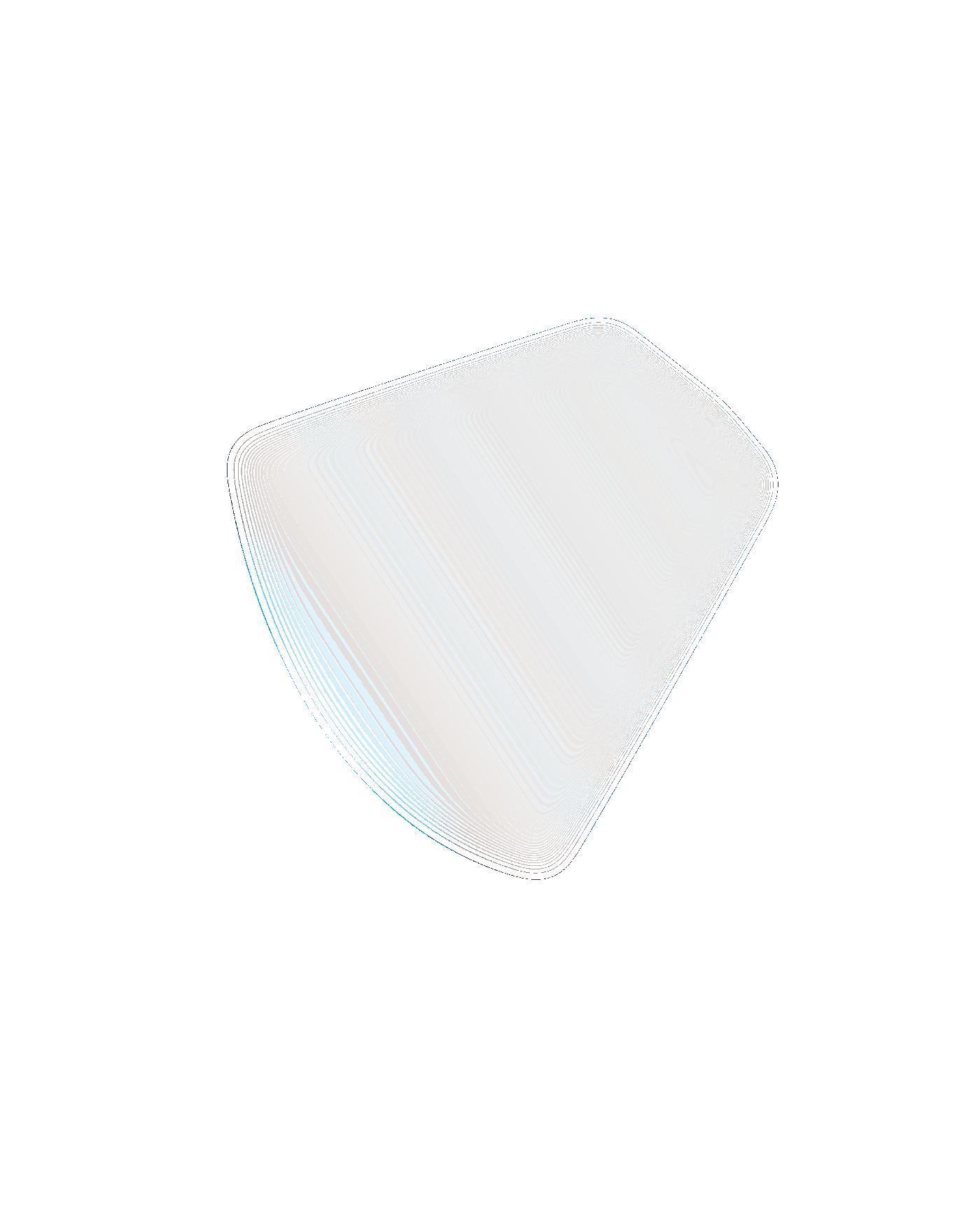
The roundtable participants with the Ross Video team.


ACUN MEDYA EXXENTUATES STREAMING STRATEGY
Turkish streaming service Exxen’s rapid rise has been only the beginning for parent company Acun Medya. With live sports fuelling massive demand and global ambitions, the broadcaster partnered with Accedo to transform the platform into a world-class, scalable service. BroadcastPro ME brings you the inside story
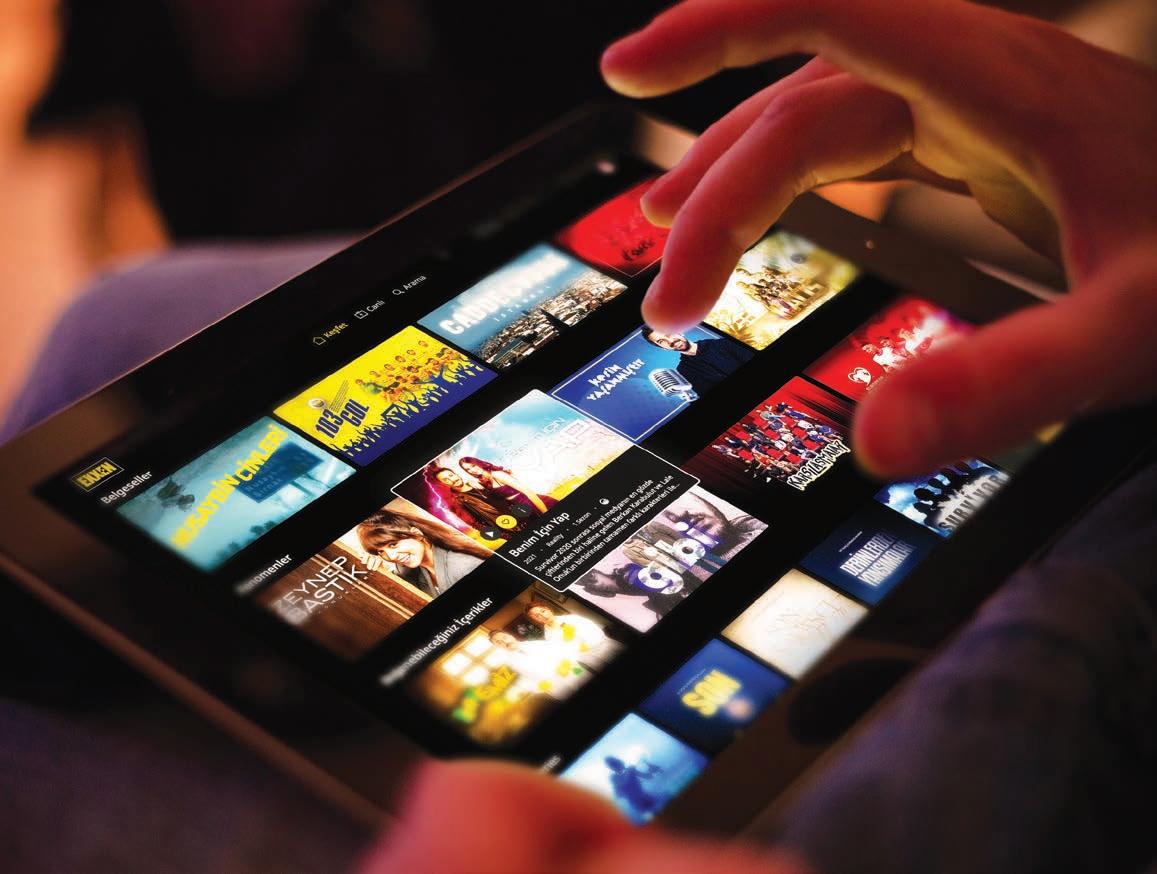

When Acun Medya launched videoon-demand service Exxen in 2021, it came with significant expectations in Turkey. As one of the country’s most prolific content producers, generating more than 5,000 hours of primetime television annually, owning two national television channels and operating a portfolio that spans production companies and even football clubs, Acun Medya is a major force to be reckoned with. Its founder, Acun Ilıcalı, is a household name as a celebrated TV personality and producer, in addition to being an influential media entrepreneur.
With that background and the ability to draw on a library of Turkish original programming, global acquisitions and live sports, Exxen quickly surpassed the millionsubscriber mark. That momentum was further supercharged when Acun Medya secured exclusive rights to stream the UEFA Champions League and UEFA Europa League for three consecutive seasons. When sports came into the mix, however, it also exposed Exxen’s limitations in terms of infrastructure and performance.
The streaming platform was no doubt a national success, but Acun Medya, which operates with a global mindset, had more ambitious plans for the online service. It produces daytime and primetime content in Europe and South and North America, as well as its own sports-reality format, EXATLON, in Mexico, the US, Hungary, Slovenia, Romania and Colombia. Therefore, the plan with Exxen was always to ensure global reach and relevance. That, however, would require greater technical prowess.
Acun Medya reached out to Accedo, which was assigned full responsibility for operating, managing and enhancing the Exxen service as well as improving its reliability and performance, while
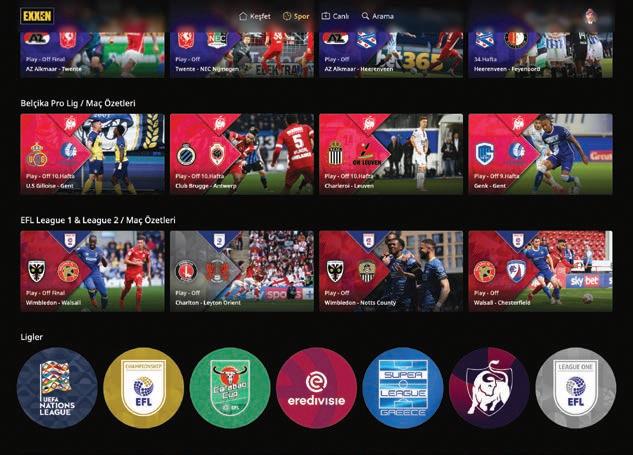
optimising the user experience for its global subscribers. “The provision of the service is being managed entirely by Accedo to ensure smooth and consistent quality of service and user experience, even during peaks around live sporting events,” says Iris Nedio, Head of Account Strategy at Accedo. Burak Ayan, Business Development Director at Acun Medya, places the whole project in perspective: “Our vision for Exxen has always been global. To achieve this ambition, we had to fundamentally rethink how we
The most important factors for Exxen were being able to ensure smooth video playback across all devices consistently IRIS
NEDIO, HEAD OF ACCOUNT STRATEGY AT ACCEDO
build, operate and scale the platform. Through close collaboration with world-class technology partners, we led a full-scale rebuild of Exxen’s applications across Android, iOS, tvOS, Android TV, Samsung, LG and web, establishing a modern, resilient infrastructure capable of supporting international expansion.
“This transformation involved deep integration with core systems including payment, billing, online video playback, AI-powered analytics, incident monitoring, customer lifecycle management and regulatory compliance, all while maintaining uninterrupted service across evolving subscription tiers.
“I’m proud of the collective effort across teams and partners that made this possible,” he adds, claiming that this deployment has helped position Exxen as a competitive OTT platform that is “ready to grow globally with a robust, user-centric and future-proof foundation”.
Key partners who played a critical role in this transition along with Accedo include ZotloPay, Oracle, Brightcove, Jump AI, PayTR and Evergent.
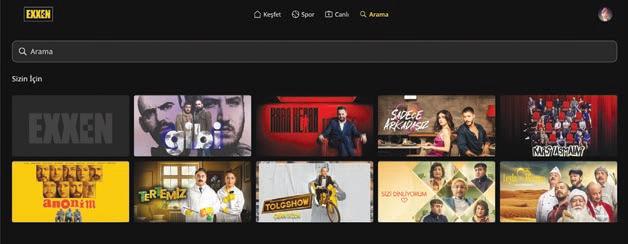
Migrating to Accedo Managed Service
One of the biggest challenges when providing a popular array of content is ensuring a consistent experience for viewers even during busy times. With Exxen, Acun Medya was challenged by the platform’s own success, with the service not performing as well as it could when viewership peaked. This was especially common during live sports, but also occurred at other moments. While the content remained attractive, constant buffering and latency issues brought a clear risk of churn and deterred Exxen’s ambitious growth plans.
Global expansion also meant having a premium and compelling user experience that could compete in a crowded marketplace. These aspects, and the desire for a broader global presence, led Exxen to seek help to rebuild its apps, handle the right integrations and manage the service to deliver a smooth and scalable user experience.
Accedo provided and managed the solution end-to-end. It initially focused on understanding the streamer’s pain points, reviewing viewer experience and outlining goals. Subsequently, it redeveloped the apps for various platforms including connected TV devices (Android TV, tvOS), mobile platforms (Android, iOS) and web. The aim was to deliver a premium user experience by leveraging its suite of solutions and extensive experience in building video services. This approach ensured that each
app was optimised for its platform while maintaining a robust backend capable of supporting service growth.
The next step was migrating existing data and integrations to the new system, ensuring no subscriber data was lost and the full content catalogue and associated metadata remained intact.
“This is a meticulous process,” explains Nedio, “as it is vital for everything to be cross-referenced to ensure no mistakes are made or pieces dropped in the migration. While some technology was suggested and added by Accedo, Exxen had existing integrations in place that needed to be migrated. This included payment technology from
PayTR, ZotloPay and Oracle ERP for billing, as well as MySoft IYS, which ensures governmental invoicing data compliance. Advertising placements are all handled via Google Ad Manager.
“As well as the migration of these third-party tools and services, the current and historical user data managed by them also had to be migrated, ensuring billing remained constant. As part of that, it was also important to migrate the data relating to the level of subscription for each individual. Exxen has several subscription tiers including a basic package, an ad-free package as well as a sports package, with subscribers able to build the right combination of those depending on their preferences, budget and location. This process was further complicated as the packages were updated during the migration process.”
Selecting the tech stack
Aside from the technology it had already committed to, Accedo also needed to select the right technology partners and integrations for the service, continues Nedio: “The most
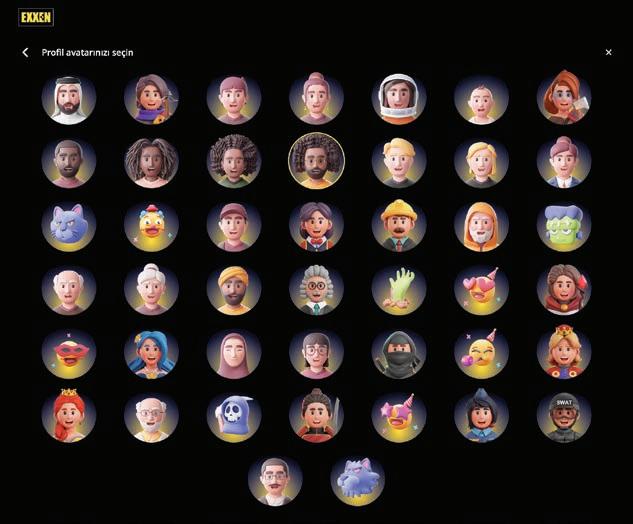
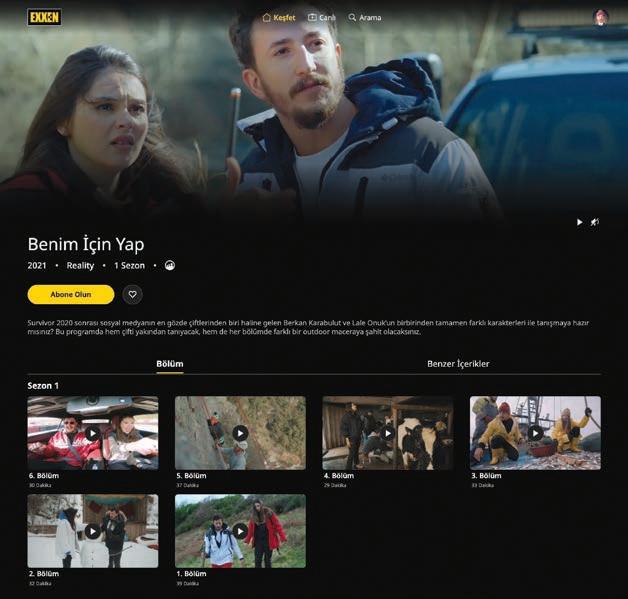
important factors for Exxen were being able to ensure smooth video playback across all devices consistently. It was important that it remained stable as the service grew, including during peak periods. It was also vital to be able to gauge subscriber happiness, identify churn risk and adapt the service accordingly.”
Integration with third-party solutions including native players and the Brightcove Player created a consistent and seamless streaming experience across multiple devices. Combined with Accedo’s middleware, the service can now effectively handle traffic surges and scale without compromising on quality.
Accedo also integrated with Jump AI Technologies to gather insights and enable AI-powered and -optimised content discovery and a personalised video experience. With this integration, the expanded service continually gathers data about user
Our vision for Exxen has always been global. To achieve this ambition, we had to fundamentally rethink how we build, operate and scale the platform
BURAK AYAN, BUSINESS DEVELOPMENT DIRECTOR AT ACUN MEDYA
behaviour, helping deliver a more tailored experience and reducing churn.
In addition, Accedo Insights, the company’s proprietary observability service, provides video services with performance and operational insights through real-time monitoring and advanced analytics, explains Nedio.
“This means we can quickly and easily identify and resolve any issues.”
With both Brightcove and Jump part of Accedo’s existing tech stack, their solutions were already preintegrated, making the process much smoother. Following integration, Accedo conducted extensive testing to ensure everything worked as expected.
Setting up for global success
With the new system in place, Exxen is not just able to deliver a premium experience to viewers in Turkey and beyond but can also scale as required without compromising on quality or viewability.
“What was also important was the work carried out post-launch,” explains Nedio. “The Accedo team carried out a full audit across multiple teams and areas, including infrastructure, software engineering, architecture and security best practices. The team reviewed the work done during the engineering phase, identified any areas that could be further optimised and then implemented those modifications to enhance scalability and reliability.”
One area where this will particularly have a significant impact is in managing the lifecycle of live sports events, concludes Nedio.
“While the action itself is live, the stream can be scheduled to automatically move between different states: upcoming, where there is a countdown to the main event; ongoing, with the live stream; and finished, where the live stream is replaced by clips from the event. Live sports were not on the radar at the start of the project, but having acquired additional rights, Exxen was keen to ensure the lifecycle of these events could be managed seamlessly. Accedo will also be able to gather the necessary insights to grow and evolve the service to meet ever-changing consumer demands.”

SHEDDING LIGHT ON THE NEW ASTRA IP
Lighting camera operator Ed Lister puts the latest Astra IP through its paces in the desert, the rain and everything in between. With a new design, weather sealing and a slew of upgrades, is it still the Swiss Army knife of lighting, or something else entirely?
Throughout the years I’ve tried and tested all the various models of the Astra in some of the most challenging conditions going. News reporting in flash floods, wildfires, torrential storms, you name it. They’ve always taken a real beating as I travelled around the world throwing them into all kinds of scenarios. But the new release from Litepanels, the Astra IP, feels like a completely different animal. In my line of work, I travel frequently. Lighting gear gets packed into bags and inevitably takes a few knocks along the way. Previous models such as the 6X have always been incredible workhorses for me, but I’ve still had to repair them a

few times over the years. The new IP models, however, feel so much more robust that I honestly don’t expect that to be an issue anymore.
First impressions
Straight out of the box, the Astra IP instantly feels rock solid – harder, more rugged, heavier and with less plastic than ever before. Nothing seems flimsy or to have any weak points. The new model is also a completely different design and shape, which was really surprising. Looks-wise, it is now like something out of a sci-fi movie, super-cool with angles everywhere. On the back, there is now an LED screen. We can properly monitor numerical readouts of light levels and Kelvin. This is a game changer!
The dials are larger and slightly recessed into the body, a great improvement for both storage and durability. They’re far less likely to be damaged in transit than before. Another change I am absolutely thrilled about and relieved to see is that the battery plate is now integrated directly onto the unit, rather than hooked onto thin plastic brackets mounted underneath as previously. The mount itself has been converted to metal too. Litepanels has clearly been listening to end-user feedback!
I was pleased to see that the mains power port has also been moved and is now in a far less awkward position. It used to be in the middle of the bracket, making it fiddly to get the cable in and out. It is now simply positioned on the side of the unit. Everything just feels like it has been designed with the end user in mind, which is extremely refreshing.
One of the first things I heard about before the release was that the Astra IP range is now weather-sealed, with a significantly improved IP rating of 65, up from the previous 20. To be honest, I have always been amazed at
Straight out of the box, the Astra IP instantly feels rock solid – harder, more rugged, heavier and with less plastic than ever before
ED LISTER, LIGHTING CAMERA OPERATOR
how well they perform and hold up. They have been out on location in the heavy rain, snow and intense Dubai summers many times and have never struggled. This upgrade only adds to their durability, making them even more reliable in tough conditions.
Powered up
The backlit screen is such a lovely addition for those late night or early starts, eliminating the need to shine a torch on the dials. It immediately gives the light a more premium feel, especially with the Litepanels logo
nicely greeting you when powering on. The dials work as expected when turned quickly, adjusting either power or CCT in the usual way. But when turned slowly they now also provide tactile, single-stop increments that allow precise micro-adjustments. The power dial enables fine-tuned changes in 0.1% increments, while the CCT dial adjusts in steps of 10 Kelvin. Pressing the dial offers a quick jump, either a 10% increase in power or a 200 Kelvin change, which is a thoughtful and convenient feature. The centre dial also includes white balance presets (2700K, 3200K, 5600K, etc) that can be accessed quickly.
Having all this information clearly visible on the display is a significant upgrade. It adds precision and ease of use that simply wasn’t possible with the two basic knobs of the previous version. You can rotate the display if you’re mounting your fixture differently, dim the backlight, turn the fan off, use Bluetooth and much more. Things are really aimed at helping you out on the shoot. The menu itself has many features
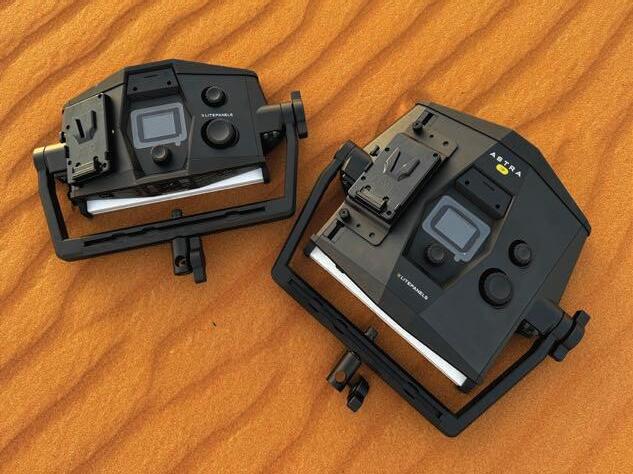
The Astra IP range is now weathersealed, with an improved IP rating of 65, up from the previous 20.
to explore: my favourite is the system monitor, which is brilliant. It shows you exactly what is going on in real time in the engine room in terms of input/power out, daylight temp/ tungsten temp, and LED temp.
Output
The previous Astra 6x had a beam angle of 45 degrees with an output of 1500 lux @ 3m/10ft, with an IP rating of 20. For the IP range, Litepanels has created a narrower beam angle of 30 degrees, increasing the output but in a smaller circle.
The 1x1 IP offers an output of 3000 lux @ 3m/10ft, which is seriously impressive; the IP 1/2 offers 1500 lux @ 3m/10ft (the same as the 6x, but in a light half the size). Having a lamp so strong yet so portable really gives you creative freedom, making this extremely versatile and a great bit of kit for travel. Having this extra output power in both lights is a welcome bonus, especially in the Middle East. It’s incredibly useful in situations when we need to compete with the sun. To complement this, underneath the lamp it states “suitable for operation not exceeding 45°C”. This is ideal for summer shoots here, where you’re lit and set up on location for long periods of time and concerns about gear overheating in the sun start to creep in. Last month, I took the 1x1 way out into the desert in Dubai for a heat test to see how it got on. I had it powered up outside on top of a tall dune for well over an hour, and temperatures reached above 53°C. There were no issues with any electronics at all; it passed the test with flying colours, though I couldn’t touch the metal parts of the fixture as they had become so hot. Not having to worry about this being an issue really offers peace of mind!
Another feature that makes these lights particularly well-suited for this

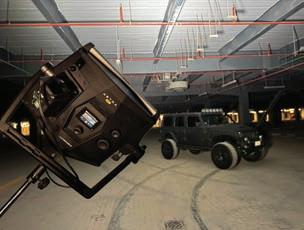
region is their weather-sealing, which offers much better resistance to the sand and dust we battle with daily. I can’t see any visible openings on the surface of the light, nor can I even spot the fan unit. This is excellent for keeping all the destructive things out, especially during desert shoots, filming in environments with high humidity levels or when those sudden unpredictable
THE GOOD
Weather-sealed at IP65 rating for extreme durability
Increased output now at 3000 lux at 3m in the 1x1 New half size available for portability
THE BAD
Weight increase
THE WISHLIST
Slightly quieter fan would be great (but you can disable it) I wish this had come out sooner!
sandstorms roll in. Many other lights from competing manufacturers allow dust and grit to get inside far too easily, which becomes a real hassle to clean or repair. That’s what makes these fixtures feel truly suited for any environment, something I genuinely appreciate.
Astra has been a staple in the broadcast world in the US and Europe for many years now. I’ve always loved how it has been my complete Swiss Army knife of portable lighting. It can be thrown up quickly just as a panel light for ENG work, but add the DOP choice snap bag soft boxes onto the front and it instantly transforms into a serious beauty light perfect for commercial and high-end shoots, offering beautiful and flattering skin tones with one of the best CRI values out there. It never ceases to amaze me. People very often ask me for lighting recommendations, and my answer is always a set of Astras for this exact reason!
All these new features and improvements are extremely impressive, but what’s the catch? The only thing I can really say is that one of the first things I noticed was a jump in the weight. It is noticeably heavier than the previous models. The IP 1x1 comes in at 4.4kg and the IP 1/2 at 3.1kg. Not a deal breaker by any means, but something to think about. That said, the light’s durability now feels significantly improved, built for a longer life out in the field ready to withstand every single knock that comes its way. I’m genuinely excited about this new release and the next chapter with the Astra IP range, and I’m curious and optimistic to see where it will take me. Here’s to the future of portable location lighting.
ED LISTER IS AN AWARD-WINNING LIGHTING CAMERA OPERATOR FROM THE UK BASED IN DUBAI.

FROM PUBLIC TO PRIVATE: UNLOCKING THE GULF’S MEDIA PRIVATISATION OPPORTUNITY
Across the Gulf, governments are stepping back and inviting private players into the media space. From new production hubs to ambitious policy reforms, the region is laying the groundwork for
a more dynamic,
commercially driven media industry, says Yusuf Buti, CEO of Harbor House Consultancy
The Middle East media landscape is changing fast. What was once a state-controlled space is now opening up to private investors, homegrown entrepreneurs and global players. Sovereign funds are backing content, media cities are growing, and digital platforms are reshaping how stories are told and shared. But progress isn’t consistent and uniform. The UAE and Saudi Arabia are moving quickly, while other countries like Bahrain and Kuwait are still held back by patchy infrastructure and outdated rules.
Drawing on lessons from inside and outside the region, this article looks at where the Gulf’s media sector is headed, and what needs to happen
for privatisation to truly take hold.
Understanding media infrastructure: Vertical and horizontal layers
The media industry rests on two interconnected layers. The first is the vertical layer, where the full content pipeline runs from idea to execution: scripting, production, post-production and distribution. This has traditionally been run by state entities, but it’s increasingly opening up to private players. Then there’s the horizontal layer: the systems that support that pipeline. Think telecom networks, cloud platforms, satellite connectivity, regulation, training programmes and
financing. Without these in place, even the best content operations will struggle to scale or compete.
Privatisation challenges:
Where to draw the line
Even with momentum building, privatisation remains a sensitive issue. In much of the Gulf, media is still viewed as an instrument of national identity and strategic influence. Governments remain cautious when it comes to letting go of certain content categories like news, religion and official messaging. There are also practical barriers. Countries like Bahrain and Oman still lack production-ready facilities and a deep pool of trained professionals. Uncertainty in the regulatory environment only makes things harder. Inconsistent laws, opaque licensing processes and the risk of censorship can put off serious investors. In the meantime, state-run entities still benefit from subsidies and monopoly conditions, making it difficult for private ventures to compete on fair terms.
Sectors ripe for investment (or government-backed entry)
Some areas of the media value chain are already commercially viable and attracting investor interest. These include content creation, particularly game shows, scripted drama, reality TV and digital-first formats, as well as post-production and VFX, especially with the growing appetite for virtual production capabilities. Media-tech startups working on tools such as AI-driven tagging, subtitling and monetisation are also gaining traction, alongside talent platforms that connect freelance actors, editors and voice artists with production companies. Other segments still require government support to become competitive. Arabic-language OTT platforms, for example, need strategic
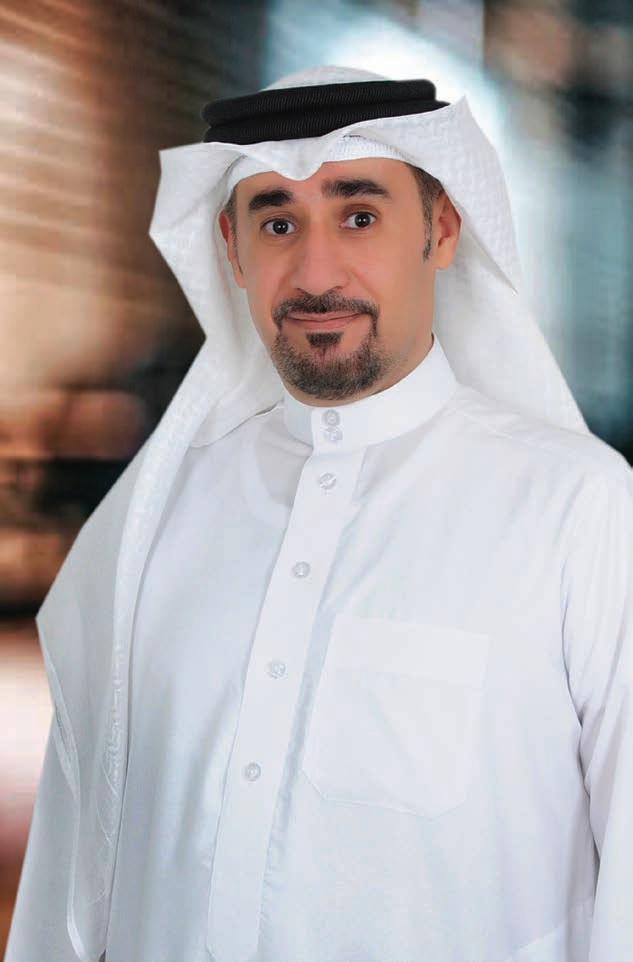
WHAT SHOULD STAY PUBLIC AND WHAT CAN OPEN UP
This hybrid model allows governments to retain control where necessary, while creating space for market innovation.
Remain Public
National news agencies
Open to the Private Sector
Entertainment and sports production
Religious and cultural content Film, drama, animation studios
Emergency broadcast systems
Spectrum management
Dubbing, subtitling, post-production
Event broadcasting, media archiving
backing if they are to rival global streaming giants. Core infrastructure including media asset management (MAM) systems and cloud-based editing platforms remains underdeveloped in some markets. And with skill shortages still widespread, investment in dedicated training academies is essential to build a pipeline of media professionals. Several Gulf markets have begun to respond with targeted support, such as production rebates and co-investment models to attract global projects, offering a template that smaller economies can adapt.
The government’s role:
Enabling the market
Privatisation works best when governments shift from control to enablement. That starts with policy reform, where outdated laws are replaced with clear, investor-friendly rules around licensing, content standards and foreign ownership. The UAE’s influencer licensing regime is one example of how policy can create order in fast-moving sectors. Infrastructure is just as important. Media hubs need more than real estate; they need world-class internet, studio facilities and access to cloud services. Projects such as Neom’s Media Village and Dubai Studio City are designed with this in mind. Governments can also help derisk early ventures. Cash rebates, tax-free zones, subsidised land and coinvestment schemes make it easier for private players to step in. And in legacy markets, public–private partnerships offer a way to modernise without relinquishing control entirely, as Egypt’s United Media Services is now exploring.
Managing the risks
Privatisation brings real opportunities but also real risks. Cultural sovereignty can erode if media becomes purely
Yusuf Buti is CEO of Harbor House Consultancy.
commercial. Sensitive sectors like news and education still need some level of oversight to protect national values. Fragmented messaging is another concern. In a crisis, too many independent voices without coordination can sow confusion. Ethical lapses are also more likely in a market chasing profits, making it essential to empower independent regulators who can uphold standards. Then there’s the infrastructure. Relying on foreign cloud providers raises data security issues. Countries will need strong data regulations and hybrid cloud strategies to protect their digital sovereignty while embracing innovation.
Adjacent industries
Media transformation doesn’t happen in isolation. It depends on support from adjacent sectors. Telecom is a big one. Without high-speed networks, edge computing and content delivery systems, modern media simply can’t function. Governmentleased public infrastructure and partnerships with providers like STC and Etisalat have made a difference in places like Neom and Dubai. Education is another key area.
Institutions like SAE Dubai and Egypt’s Academy of Arts are helping address the creative skills gap, but deeper partnerships with international universities could push things further.
Large-scale events such as Expo 2020, Riyadh Season and the World Cup have shown how tourism and entertainment can supercharge demand for live production and content creation. And increasingly, regional innovation hubs like Hub71 and Flat6Labs are funding the next wave of media-tech startups, from AI dubbing tools to data analytics platforms.
Technology: The catalyst
Technology is reshaping the economics of content creation. Cloud platforms, AI and virtual production are making it cheaper and easier to produce at scale. Software tools like Frame.io and Adobe Cloud have turned remote editing into a practical, everyday solution. Meanwhile, virtual production techniques, seen in shows like The Mandalorian, are helping studios cut costs by avoiding complex location shoots.
AI is speeding up localisation across multiple languages, making regional and global distribution more efficient, and blockchain is
COMPARATIVE MARKET READINESS
starting to gain ground in areas like IP rights and royalty tracking, adding transparency to creative transactions. But across parts of the Gulf, regulation is still catching up. Cloud adoption remains limited in several markets. To unlock the full potential of tech-driven media, national policy will need to evolve alongside innovation.
A framework for the future
A successful shift to media privatisation calls for more than investment. It needs the right conditions. That means updating outdated laws, investing in infrastructure and talent, and encouraging public–private collaboration in sectors that are still emerging. Technology is the enabler, but execution will be what sets leaders apart. The UAE and Saudi Arabia have already made bold moves in this space. With the right focus, countries like Bahrain and Kuwait can also build on their own strengths and attract new investment.
Media isn’t just an economic opportunity. In the Gulf, it is also a chance to shape how the region is seen and heard globally. Done right, privatisation can be the engine that helps tell that story.
The UAE and Saudi Arabia continue to lead on policy and infrastructure, while Bahrain and Kuwait will need targeted support to catch up. Singapore remains the global benchmark for media-friendly governance and execution.
Country Strengths
UAE Free zones, strong infrastructure
Constraints Status
High telecom costs, fragmented regulation Advanced
KSA Vision 2030, PIF support, local content push Nascent private sector, evolving regulations Emerging Fast
Egypt Skilled talent, low cost
Qatar Al Jazeera, modern facilities
Dominance of legacy institutions Mixed
Centralised control, limited diversification Stable
Bahrain Bilingual talent, fintech-media crossover Small market, weak incentives Early Stage
Kuwait Rich media heritage State dominance, outdated policies Stagnant
Oman Scenic locations, young population
Lack of facilities, restrictive cloud policy Developing
























PROTON TO SHOWCASE INNOVATIVE CAMERA TECH AT IBC
IBC2025 will mark the European debut of two Proton Camera Innovations models: the Proton Zoom and Proton HFR. First previewed in prototype form at NAB 2025, both will be shown in their final, production-ready versions. The Proton Zoom introduces optical zoom capabilities to the company’s lineup for the first time, featuring a 2.2x zoom range with adjustable viewing

TELESTREAM SET TO SECURE VANTAGE AT IBC2025
Telestream is set to preview its enhanced Vantage ecosystem at IBC2025. Integrated with scalable AI capabilities, Vantage AI introduces advanced features such as automated captioning, speechto-text metadata extraction, visual quality control and content enrichment. These tools accelerate decision-
making across live and file-based operations while allowing deployment on-premises, in the cloud or in hybrid configurations. A natural language interface makes the system more accessible across diverse teams, streamlining repetitive tasks and reducing operational errors.

angles between 50° and 115°, and a wide F1.4 aperture for low-light performance. Housing motorised optics, it has a compact footprint of just 50mm x 50mm x 68mm, making it one of the smallest zoom-enabled broadcast cameras on the market.
The Proton HFR, meanwhile, brings ultraslow-motion capabilities to Proton’s offering. Featuring a 2/3” global shutter sensor and the ability to capture
240 frames per second, it supports seamless integration into live production environments thanks to its multi-phase SDI output system. This allows slow-motion footage to be assembled by servers without disrupting ongoing capture, a significant advancement for sports and high-action broadcasts. The new models will be available for live demonstrations at the company’s booth at IBC.
HITOMI TO IGNITE INTEREST WITH MATCHBOX ECOSYSTEM
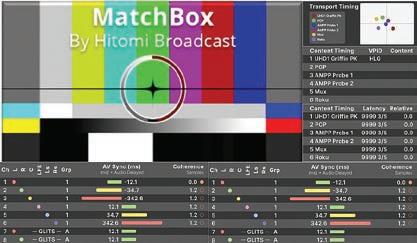
Hitomi Broadcast will showcase its expanded MatchBox ecosystem at IBC2025. The company’s timing measurement technology addresses latency challenges across diverse environments, from traditional broadcast facilities to venue production, consumer devices and medical applications. Its new software solutions create a comprehensive
ecosystem that connects different parts of the broadcast chain, enabling teams to share analysis resources and measure timing accuracy from camera to final distribution.
Hitomi will show its glass-to-glass measurement capability, showing how end-to-end latency can be precisely measured from camera capture through to final display.
IKEGAMI BRINGS FOCUS ON UHK-X700RF WIRELESS TELEVISION CAMERA
Ikegami has announced the addition of the UHK-X700RF wireless portable camera to its UNICAM-XE product range. It is equipped with a native UHD-sensor (3840 x 2160 pixels), with a global shutter architecture designed to capture natural images even under challenging situations. The wireless camera supports UHD (2160@50p/59.94p) and HD (1080@50p/i, 59.94p/i) frame rates as a standard feature. It also incorporates
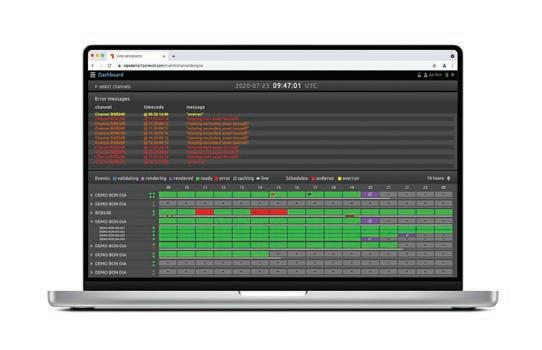
a dual filter wheel enabling separate control of incoming light and colour temperature. Space is included to mount any desired effect filter or an optical low-pass filter to further reduce aliasing and moiré artifacts. Automatic optical vignetting correction is supported when using
OVC-compatible B4 bayonet mount zoom lenses. The UHKX700RF’s transmitter operates in the 2-2.7GHz band, accessible in 250kHz tuning steps, with output power of 100mW. Two antennas mounted at the rear of the camera comprise one for the main video signal plus a smaller one for telemetry data. Multichannel antenna diversity is a standard feature, providing robust signal delivery in a wide range of
BCNEXXT TO STREAMLINE OPERATIONS WITH VIPE
Dutch developer
BCNEXXT will showcase a new version of Vipe, its cloud-native playout platform designed to streamline operations for live, FAST and linear channels at IBC2025. Vipe’s pre-assembly, exception-based architecture greatly reduces operatorto-channel ratios and infrastructure costs while delivering unrivalled reliability, flexibility and agility. BCNEXXT has now changed the paradigm by introducing a new level of automation.
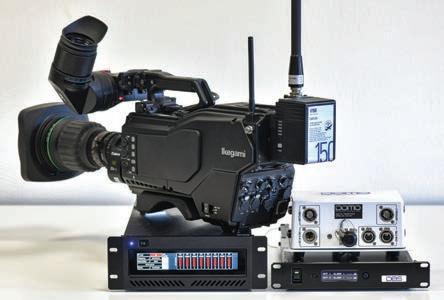
“We’ve developed a groundbreaking architecture that leverages containerised microservices to scale resources to the complexity of the content being played out,” said Graham
Sharp, VP of Sales and Marketing at BCNEXXT. Vipe’s new features include AI-powered live subtitling workflow for fast and accurate captioning across multiple languages; real-time voiceover
transmission environments. Encoding is fast, typically just 40ms input to output at UHD or HD resolution. Transmission range in a standard configuration is approximately 500m. Up to 22 transceivers can be used in a single system. The receiver/decoder for the main video signal occupies a 19-inch half-rack width chassis. It employs DVB-T modulation in QPSK, 16QAM and 64QAM. Bandwidth is switchable between 8MHz and 5MHz. To assure robust signal quality, the DVB-T guard interval can be switched in four discrete steps: 1/32, 1/16, 1/8, 1/4.
for integrated voice synthesis and multilingual dubbing for live broadcasts; full support for Hybrid Log-Gamma (HLG) to deliver high-dynamicrange visuals optimised for both SDR and HDR displays; immersive audio support for Dolby Atmos, enabling cinematic-quality soundscapes for live and linear content across OTT and broadcast platforms; and expanded automation across ingest, quality control, metadata enrichment and scheduling.
DALET TAKES THE MODULAR APPROACH
Dalet will showcase its new modular ecosystems designed to increase efficiency and unlock revenue opportunities across content supply chains for news, sports and entertainment at IBC2025. For news operations, the company has added new intelligent AI agents with the capability to accelerate story-centric workflows across planning, production, rundowns and distribution. Journalists can take their newsroom on the go with mobile planning, allowing them to stay connected wherever and whenever the news breaks. Dalet’s C2PA-enabled workflows
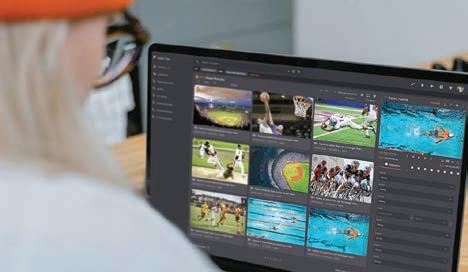
support the fight against misinformation by verifying content authenticity to help build and maintain trust with audiences. It equips users with tools to verify the integrity and origin of content, setting a new benchmark for trust and transparency.
For sports and live production, the company has introduced a new browserbased ingest portal that centralises and simplifies live content acquisition at scale, whether it is in the cloud, onpremises or hybrid. Improved near-live production tools, archive management and
workflow orchestration ensure content gets to the audience fast. Smart metadata tagging enables customers to automate the enrichment of content, optimising discoverability and monetisation.
There’s also the latest Dalet Flex release featuring significant advancements in collaboration, production and content intelligence for media and enterprise teams. The new Secure Share feature enables secure external file transfers and content reviews, allowing teams to collaborate beyond organisational boundaries while maintaining full control.
CALREC ANNOUNCES MAJOR UPGRADES ACROSS ARGO CONSOLE RANGE
Calrec will introduce a host of usability, customisation and system enhancements across its full Argo console lineup at IBC2025. The comprehensive, interconnected ecosystem showcase will feature Argo consoles, the modular Type R mixing system, the ImPulse processing core and the virtualised cloud-native ImPulseV audio engine.
The latest version of Calrec’s True Control 2.0 platform offers advanced bi-directional control across all showcased systems. It
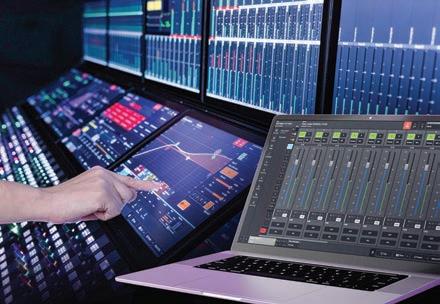
allows full-feature access, including EQ, dynamics, routing and delay, from anywhere, with a single controller able to manage up to five other systems simultaneously. It supports Argo Q, S, M and R consoles, as well as ImPulse, ImPulse1 and the ImPulseV cloud mixing solution. The ecosystem has expanded to include Apollo+ and Artemis+ consoles under True Control, offering a deeply integrated and highly
flexible production network. Enhancements to Calrec’s Type R system include off-air recording, improved GPIO talkback, mix minus user labelling, monitor selector follow and a new DSP pack offering 32 auxiliary buses. The additions strengthen the system’s capabilities for distributed production and virtual workflows.
Also debuting at the show is Calrec’s new Argo v1.4 software with improved routing visibility via touchscreen, expanded strip mode switching and support for dual custom wild panels.
VIZRT TO INTRODUCE MANAGED SERVICES FOR LIVE CONTENT
At IBC, Vizrt will launch its Managed Services (MS) to simplify the complexities of live production by offering dedicated assistance, operational proficiency and technology.
Vizrt Managed Services provides flexible, expert-led support across five key areas. Its Application Management Services offers proactive monitoring, maintenance and management of Vizrt and selected third-
party systems, enhancing performance and reliability. The Creative Services arm includes the design, creation and management of custom graphics, templates and visual assets that elevate brand identity and drive viewer engagement. MS’ Sports & Events Operations provides end-to-end support for sports and live event productions, with on-site and remote services to deliver seamless, broadcast-
BROADPEAK REVEALS NEW VIDEO STREAMING FEATURES

Broadpeak is celebrating its 15th anniversary this year, and will highlight two technologies for monetisation. These include Click2 shoppable ads that enable viewers to click directly on interactive ads within video streams while giving content providers real engagement metrics based on clicks rather than impressions. The
Spot2Spot feature includes personalised ad delivery with comprehensive measurement in live/as-live ad breaks, improving fill rates and CPMs. Visitors can also explore Broadpeak’s high audience content CDN and dynamic ad insertion as-aservice offerings such as EdgePeak and Multicast ABR (mABR).

quality content. The Corporate Communications division combines broadcast-quality tools with complete production services for internal and external communications, from concept development through delivery. Finally, the Private Infrastructure Cloud offers leasing on–premises high-performance hardware infrastructure through a flexible cost model without upfront capital investment.
GLENSOUND EXPANDS DARK8MAI LINEUP
Glensound has added two new products to its Dark8MAI line: the Dark2MAI for two inputs and the Dark4MAI for four. Designed to be used as throwdown interfaces wherever mics or line inputs are required, the new units have dual redundant internet connections, over fibre or copper. The boxes can be locally powered, but many applications will use PoE (Power over Ethernet). The new input boxes use the same circuitry as the rest of the range, providing
high-quality, lownoise, HDR capture. Also new in the Dark family is the Dark22M, a compact two-in, two-out device. With the same audio quality, network flexibility and power agility as the rest of the range, this adds return or confidence feeds, and the ability to mix and gain control on the device to tune performance to the situation.

CINEGY TO SPOTLIGHT SOFTWARE-DEFINED TELEVISION AT IBC
At IBC this year, Cinegy’s approach to future-proof broadcasting will be showcased across live production workflows, real-time distribution systems and comprehensive monitoring solutions.
Visitors will experience Cinegy’s scalable architecture through practical demonstrations of multi-channel playout operations, real-time ingest workflows handling both traditional SDI and modern IP formats, and broadcast-quality monitoring across hundreds of simultaneous feeds. A 29.16m² 8K LED wall,
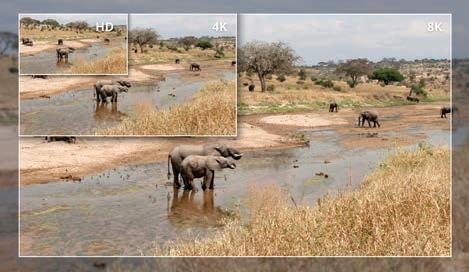
provided by FABULUX, will demonstrate its technical capabilities at 7680×4320 resolution.
Cinegy is focusing on demonstrating its continued scalability and investment protection that has enabled customers to transition seamlessly from SD through
HD, UHD, and now 8K without infrastructure replacement. This software-defined approach preserves operational expertise while advancing technical capabilities.
New AI-enhanced capabilities will be shown through real-time
upscaling and frame rate conversion workflows. These tools integrate seamlessly into existing broadcast operations without disrupting established workflows.
“We don’t do revolution, we do evolution,” said Jan Weigner, CTO of Cinegy.
“Our customers have been with us for decades because they’re able to scale from SD to UHD and even to 8K without having to throw away their expertise or their investment. That’s the beauty of software-defined television — you grow with the technology instead of getting replaced by it.”
BLUE LUCY UNVEILS AI SOLUTION TO STREAMLINE MEDIA WORKFLOWS

Blue Lucy is set to redefine the role of AI in content operations with major enhancements to its BLAM orchestration platform. The company has introduced a flexible new framework that allows broadcasters,
producers and content distributors to integrate multiple Large Language Models (LLMs) directly into their media workflows. Moving beyond the one-sizefits-all approach to AI, the system empowers
operators to choose the most suitable models for specific tasks, offering full control over performance, cost and data privacy.
Blue Lucy will showcase how BLAM enables the integration
and chaining of multiple LLMs within a single workflow. This allows different models to be applied at different stages, such as using a lightweight summariser for low-priority metadata extraction and a more advanced model for processing highvalue or rights-sensitive content. BLAM’s microservice-based engine dynamically routes tasks to the appropriate model based on the operational context, enhancing both efficiency and output quality.
CUSTOM CONSOLES MDESK-TECHNICAL HA TO MAKE IBC DEBUT
Making its first IBC appearance on the Custom Consoles stand will be its MDeskTechnical HA heightadjustable workstation.
The MDeskTechnical HA feature set includes robust extruded aluminium legs, highstrength CDF construction, LED lighting at the front

cable ports, plus under-side power sockets for desktop
equipment. Available options include personal or PC storage, a wide choice of worktop surface finishes, freestanding 19-inch desktop pods, and desktop induction pads to charge mobile devices.
“M-Desk Technical is an industry-proven design developed for use in control rooms and related locations where there is no requirement to house large
equipment within the body of the desk,” commented Gary Fuller, sales manager.
“MDesk-Technical HA has an electrically motorised desktop which can be raised or lowered between 66 and 125 cm above floor level. Operators can choose their preferred height or transition between seated and standing work modes. Total lifting capacity is 400 kg, meeting practically any control room or postproduction suite requirements.”
DISGUISE LAUNCHES PORTABLE DESIGNER SOFTWARE X1
Disguise has introduced X1, a portable version of its Designer software, allowing creators to deliver high-quality 4K visuals from a laptop or personal hardware, no proprietary media servers required. Marking the first time the production engine behind some of the world’s largest shows has been made available in a software-only format, X1 gives production teams the freedom to design, sequence and deliver content on the move.
Created with small- to mid-sized live events in mind, including concerts, theatre productions and branded corporate experiences, X1 brings the Disguise workflow
to a travel-ready setup. The software has already proven its capabilities through live pilots at major events, such as Bullet For My Valentine’s performance at Germany’s Rockfest, Festival Napa Valley and the North American leg of Central Cee’s tour.
Raed Al Tikriti, Chief Product and Technology Officer at Disguise, said:
“In order to support the world’s biggest shows and installations, we have high-performance media servers powerful enough to seamlessly run visuals on LED walls over 4,000 sqm in size. But

not everyone needs all that power — or has the space or budget for it. That’s why we decided to create X1. With X1, for the first time, anyone can harness the same powerful Designer tools used on the world’s biggest productions, all in a portable format that’s easier and more cost-effective to bring on tour or support smaller productions.”
X1 licenses connect via USB dongles, granting instant access to the latest version of Designer. It integrates with real-time graphics tools such as Notch, Unreal Engine, TouchDesigner and Unity via Disguise’s RenderStream protocol.

IVAN VERBESSELT
Research shows that effective personalisation can increase the effective catalogue size by a factor of four
The Self-Optimising Content Flywheel: Beyond Personalisation
The media industry has embraced personalisation as the silver bullet for audience engagement, and rightfully so. Recent deployments across Latin America have demonstrated remarkable results, with viewer engagement increases of 20-60% and conversion improvements exceeding 35%. The good news is, we are only scratching the surface. These results come from bolting personalisation onto the end of a content lifecycle, essentially treating it as an afterthought. We’ve been playing defence so far, when we should have been playing offence. What if we flipped the script entirely and injected this intelligence upstream into every stage of content creation, curation and scheduling?
This is where the concept of the Self-Optimising Content Monetisation Flywheel becomes transformative. Instead of using personalisation data merely to recommend content to viewers, we can create a feedback loop that makes every content decision smarter, more targeted and more profitable.
Consider the current reality: fragmented audiences, skyrocketing content costs and catalogues where most titles barely see the light of day. Research shows that effective personalisation can increase the effective catalogue size by a factor of four, meaning significantly fewer assets go stale or
get written off at the end of licensing windows. We’ve seen clients expose 62% of their catalogue daily to users. This is a dramatic improvement from traditional approaches.
But the real opportunity lies in feeding this intelligence back into content strategy itself. When we analyse anonymised demographic clustering from recommendation engines, we discover which audiences connect with which content types. This isn’t just about serving existing content better, it’s about informing what content we should acquire, produce or commission next.
The magic happens when we apply this thinking to smart curation. Content curators today are drowning in catalogues, relying on intuition and institutional knowledge to surface relevant titles. By empowering them with the same intelligent discovery tools we give consumers, we can cut curation effort by up to 50% while dramatically improving outcomes. Suddenly, curators can effortlessly align editorial intent with demographic targeting and available content rights.
This intelligence then flows into automated scheduling that continuously optimises based on real-time performance data. Instead of set-and-forget programming, we create dynamic schedules that adapt
to audience behaviour, substituting underperforming content with similar assets that better serve the audience.
The flywheel effect is profound: better content strategy leads to smarter curation, which enables more effective scheduling, which generates more engagement data, which informs even better content strategy. Each turn of the wheel makes the entire operation more intelligent and profitable.
This isn’t about replacing human creativity; great content still requires that spark of human ingenuity. Rather, it’s about augmenting creative decisions with data-driven insights that were previously invisible. We’re not just connecting the right content to the right audience anymore; we’re creating the right content for the right audience from the very beginning.
The media landscape will only become more fragmented, with audiences more dispersed and content costs higher. The companies that thrive will be those that transform personalisation from a consumer-facing feature into a fullcycle intelligence layer that optimises every aspect of the content lifecycle. The future of media isn’t just personalised; it is self-optimising.
IVAN VERBESSELT IS CHIEF STRATEGY & MARKETING OFFICER AT MEDIAGENIX






